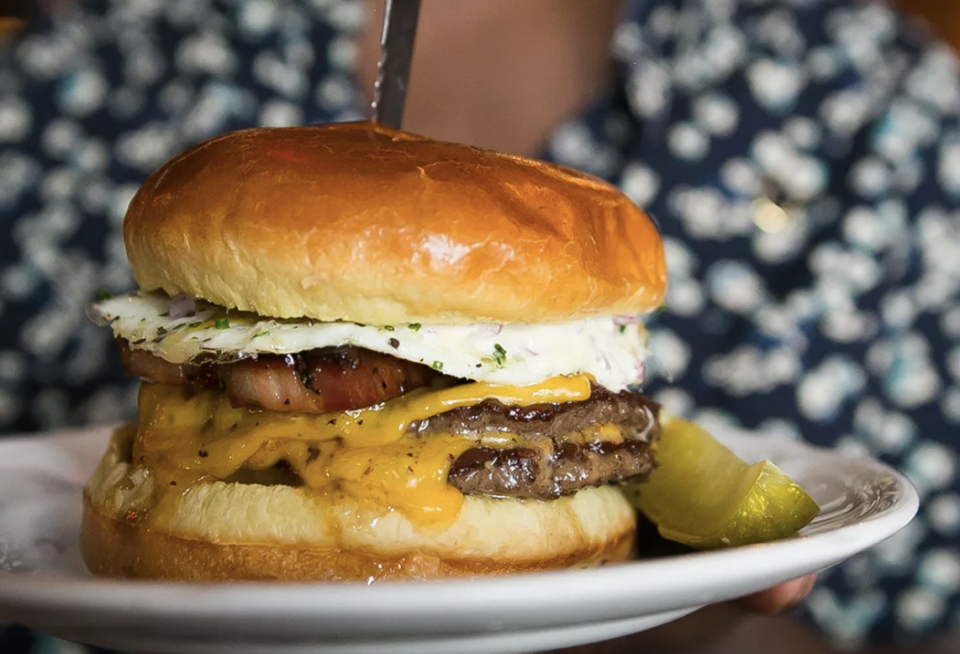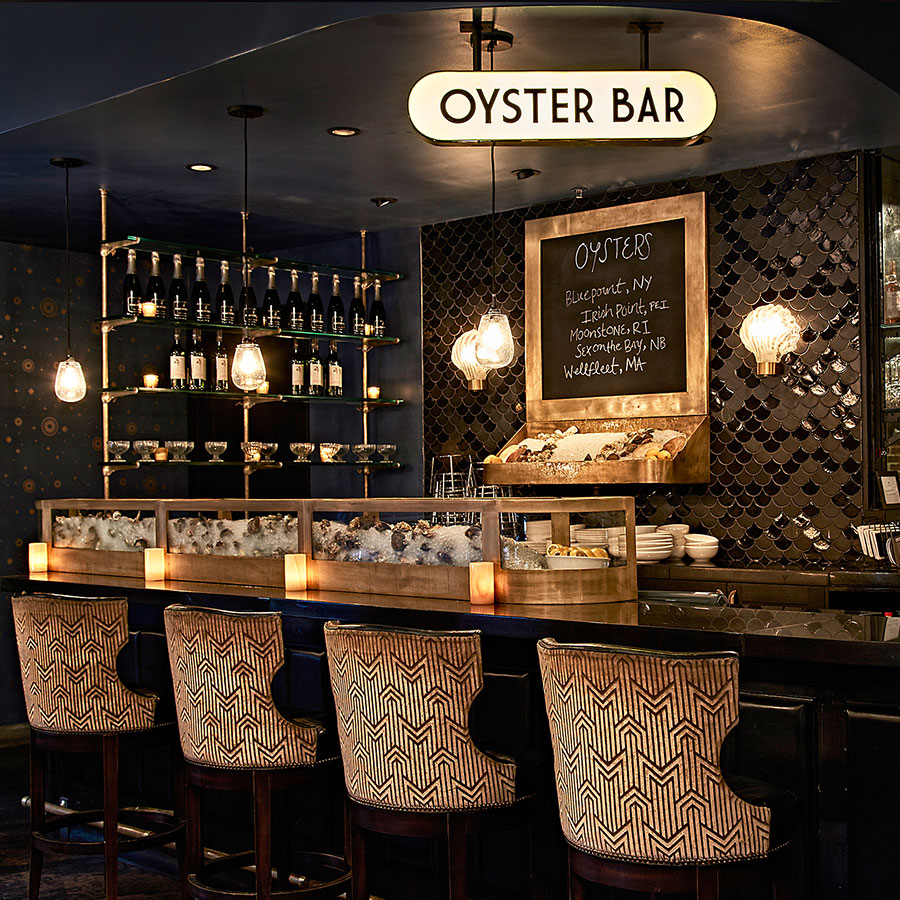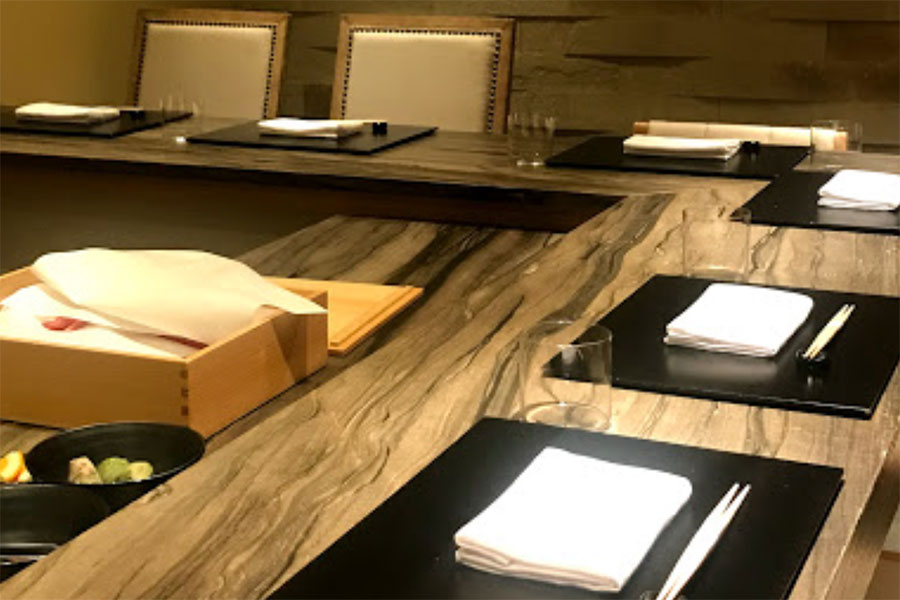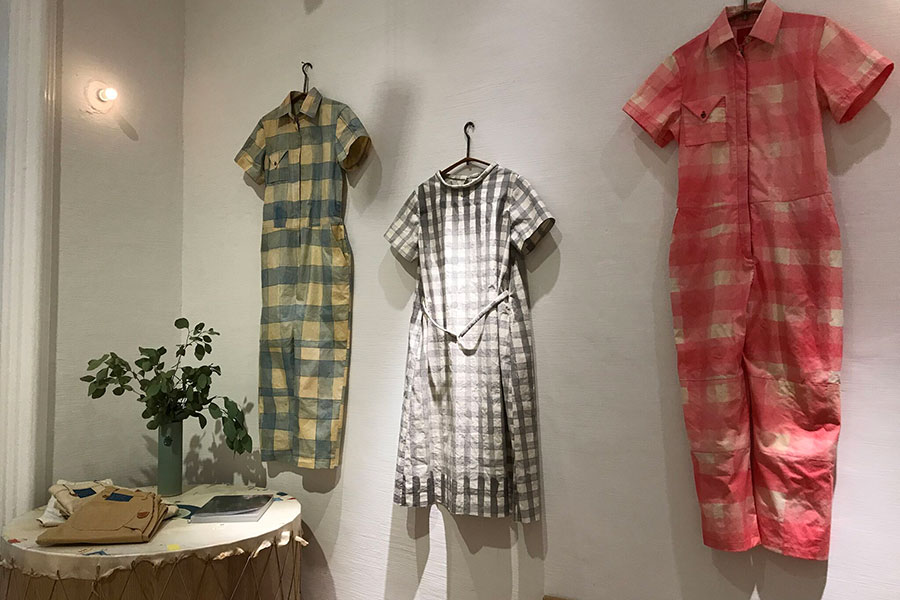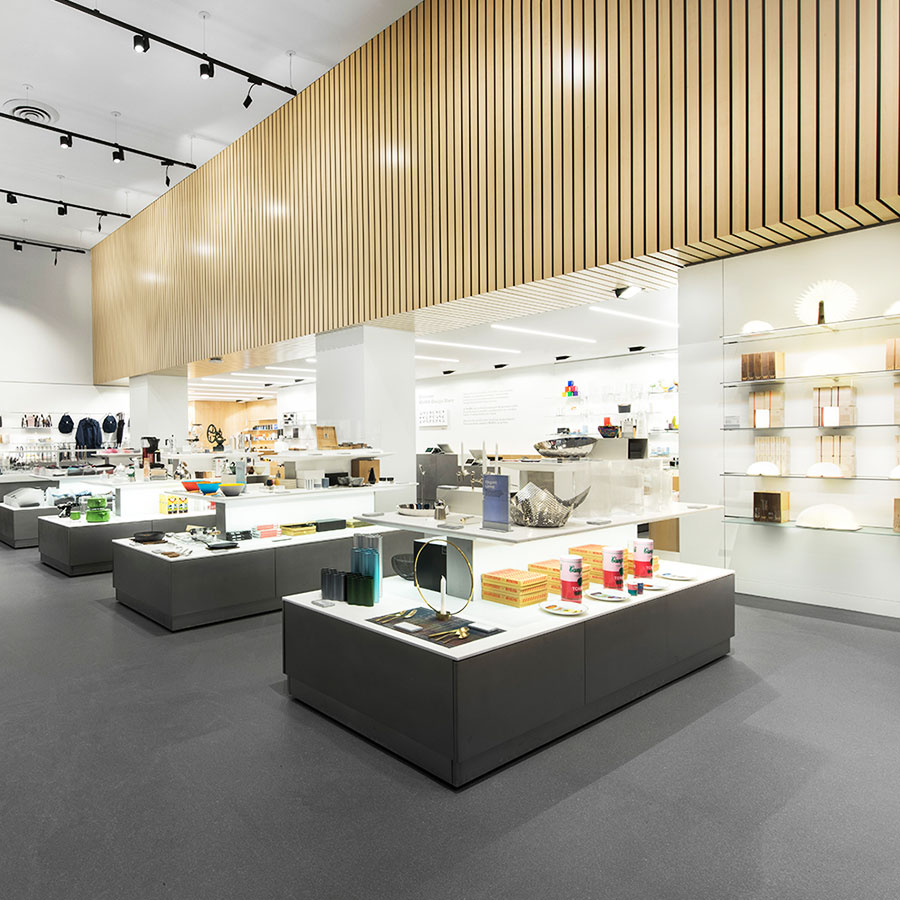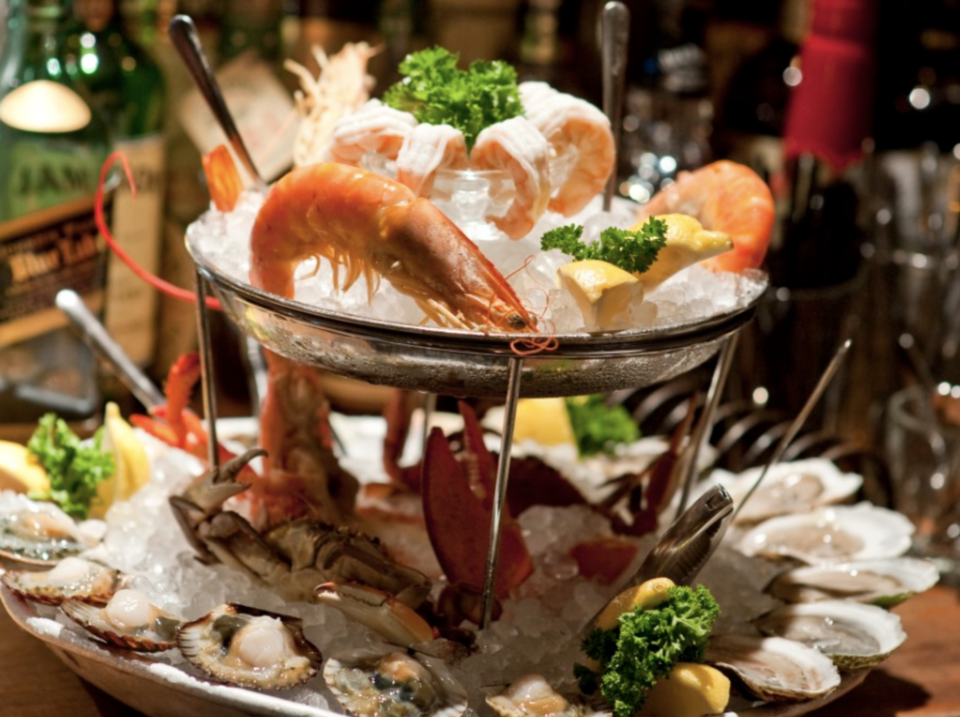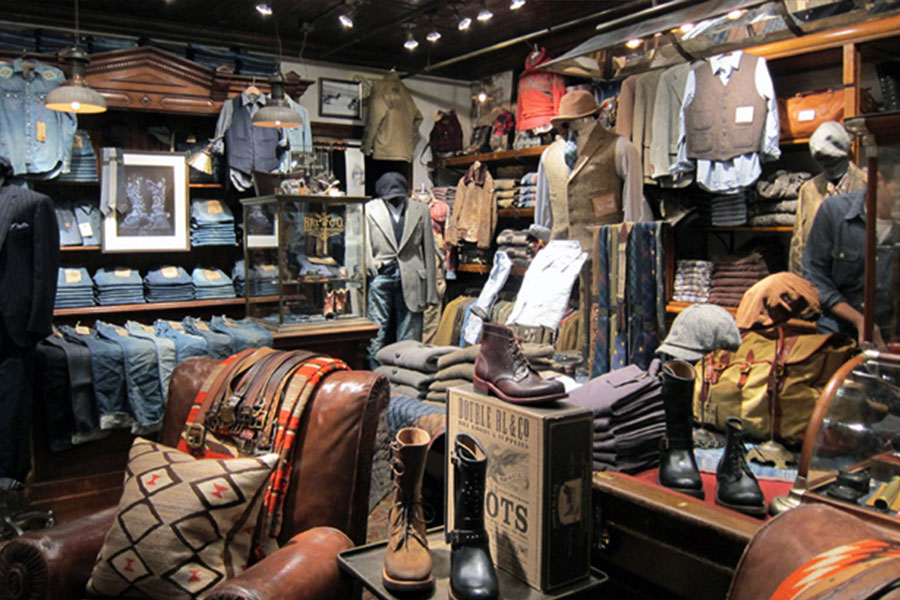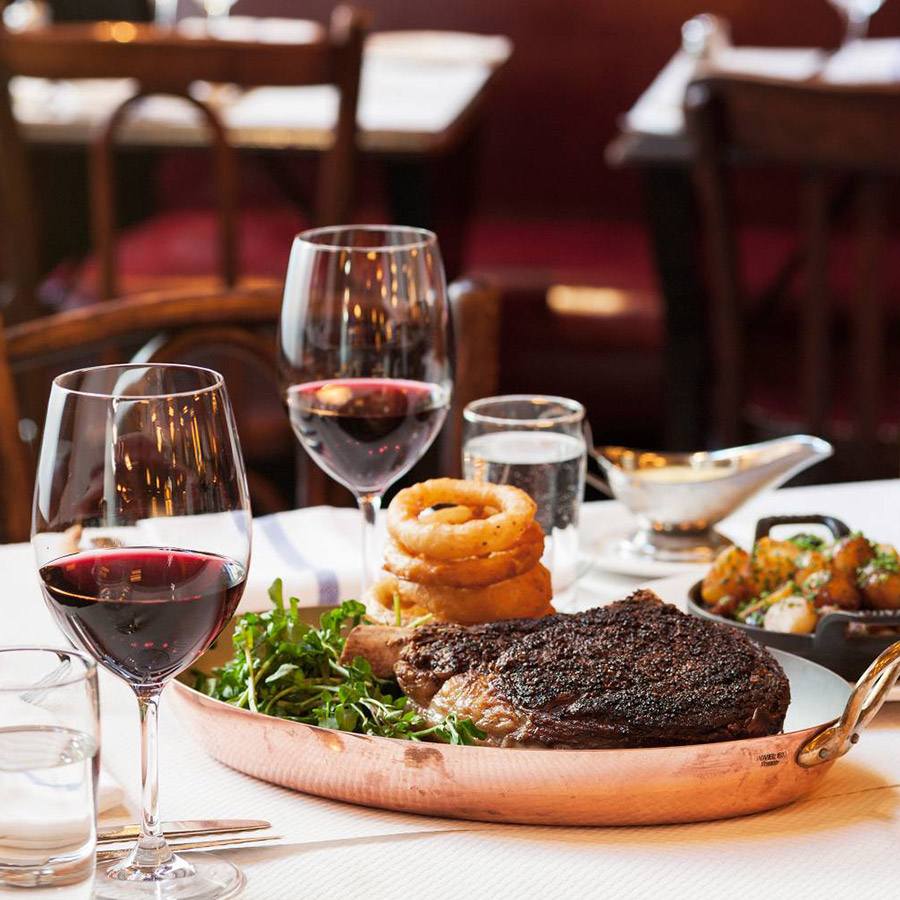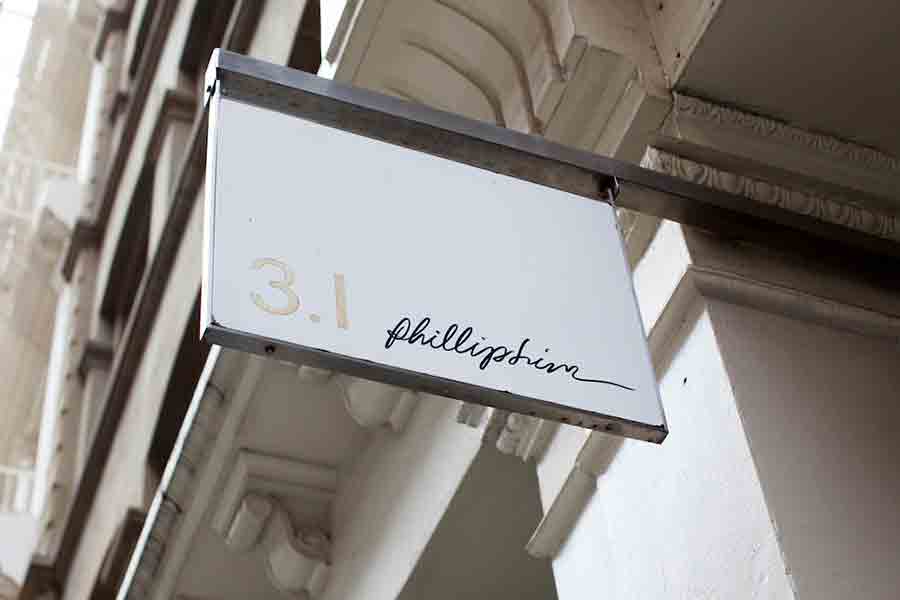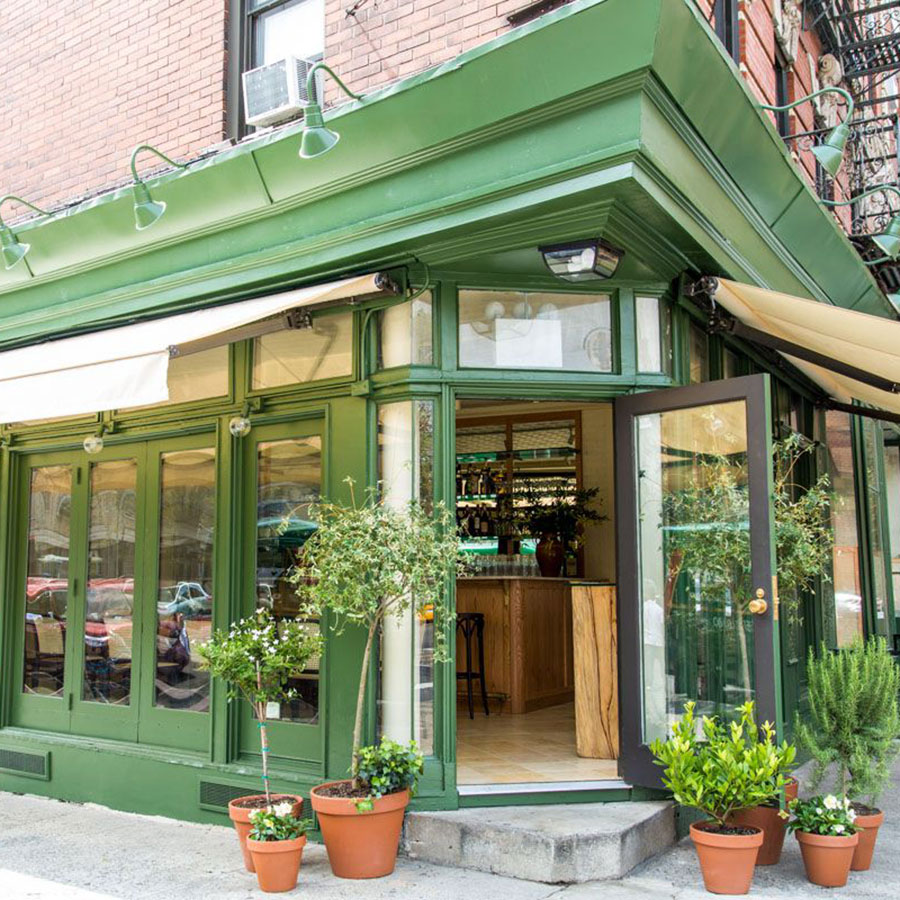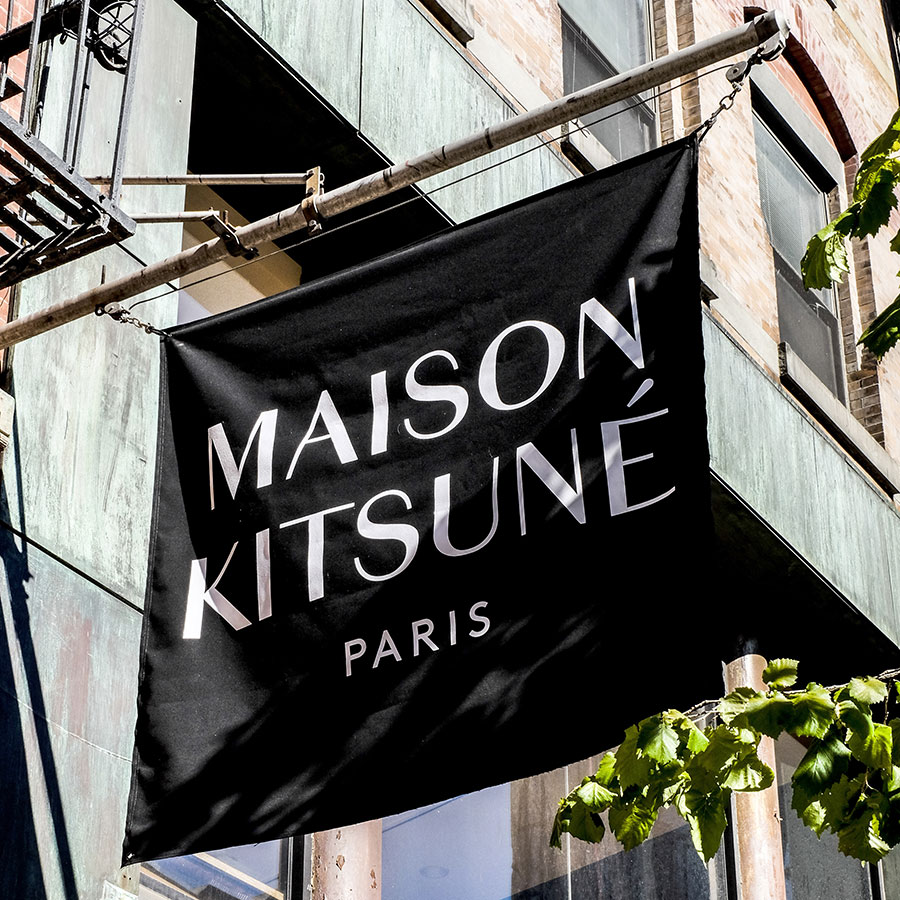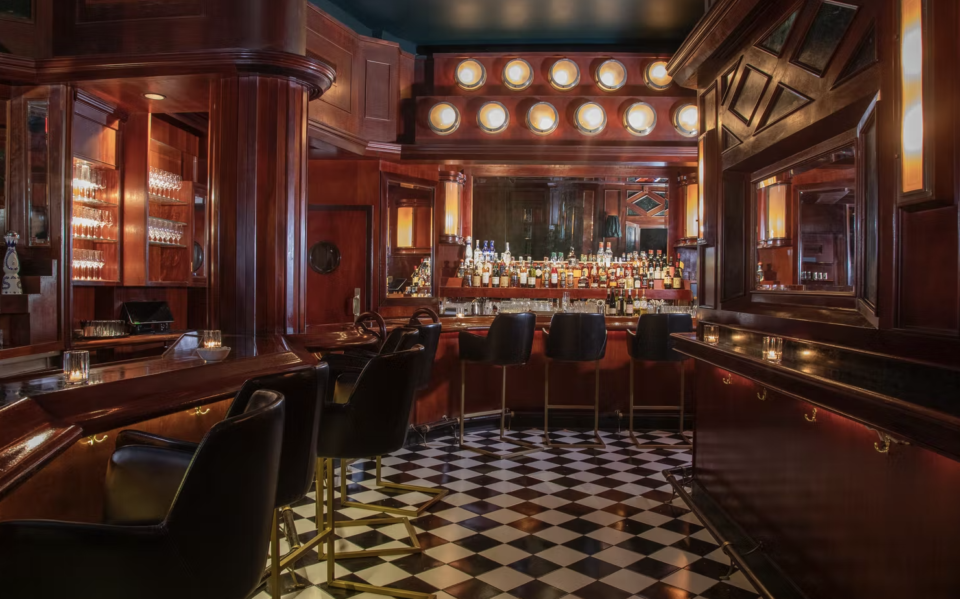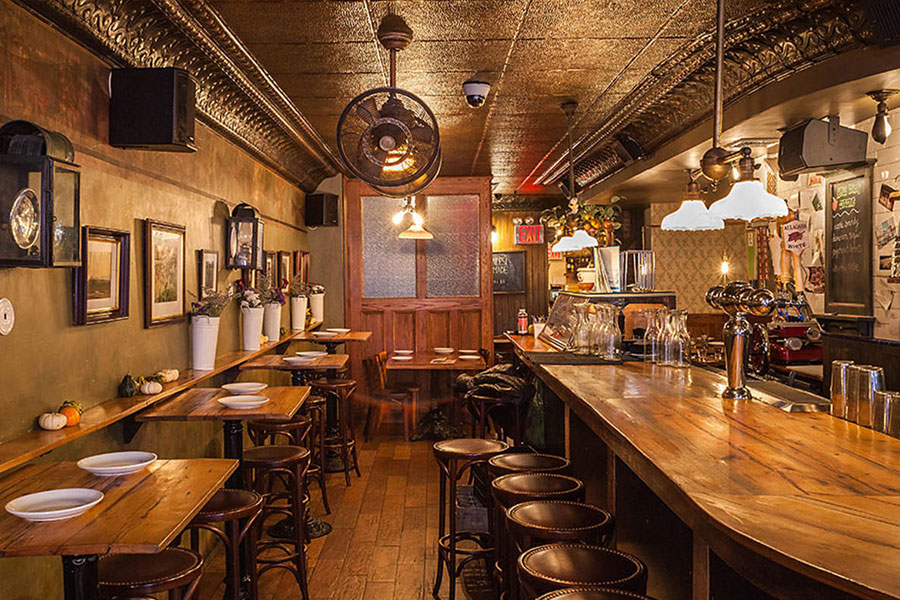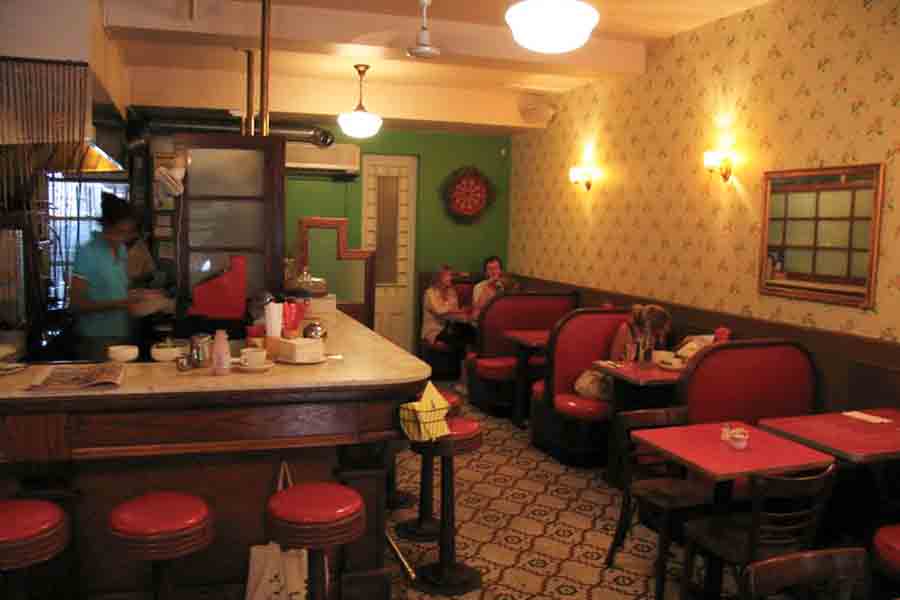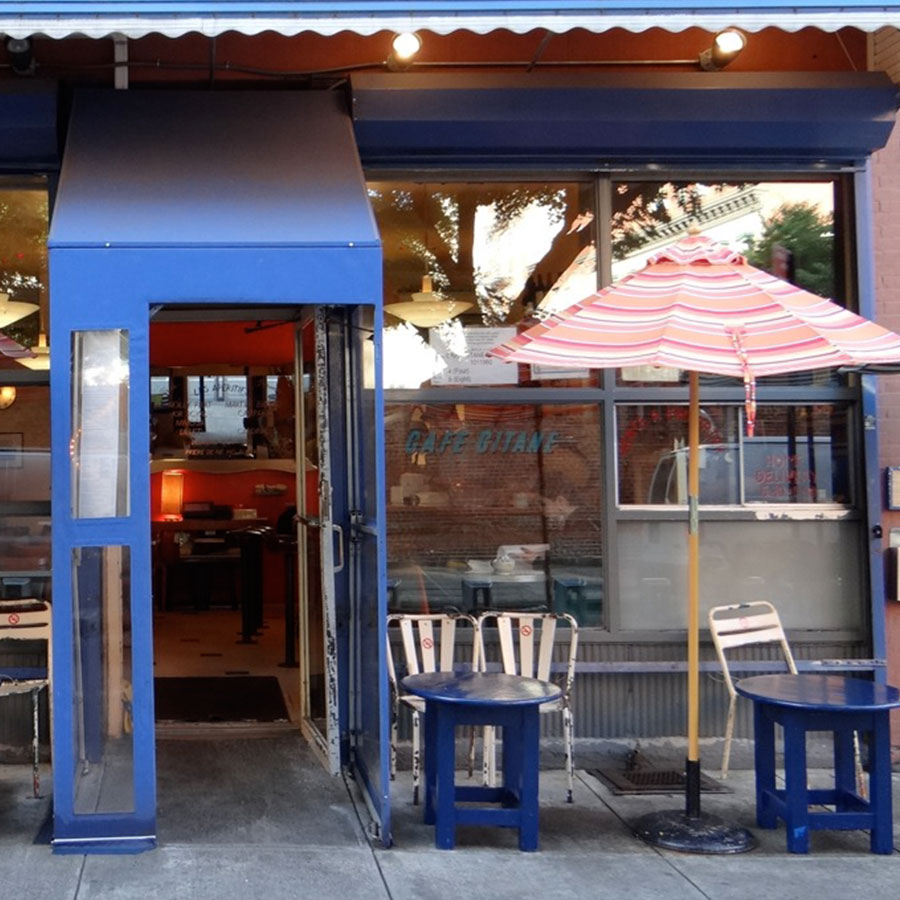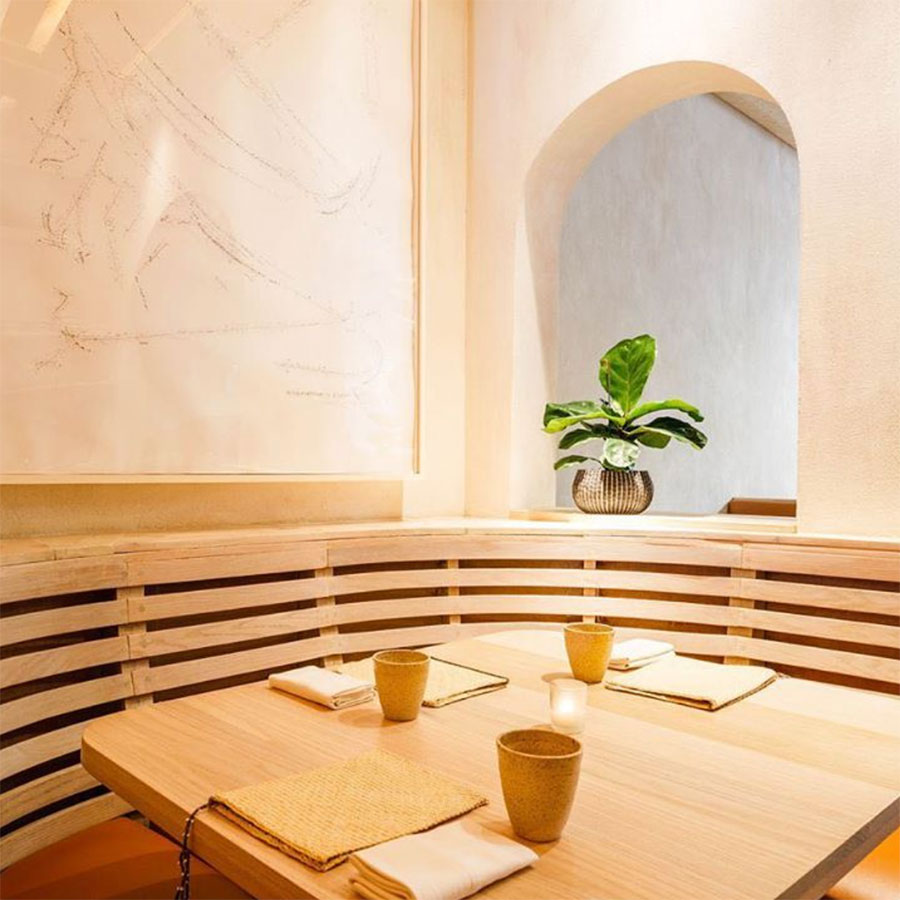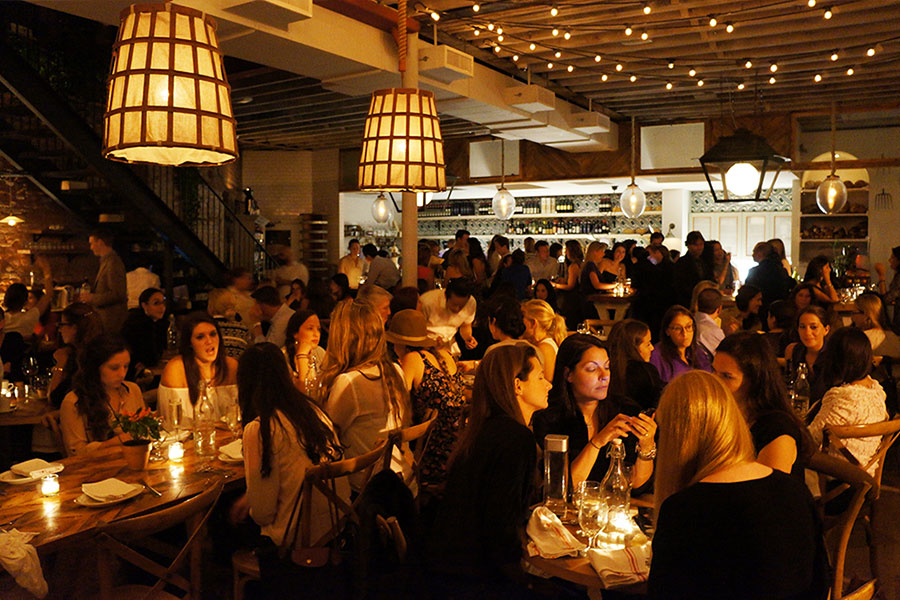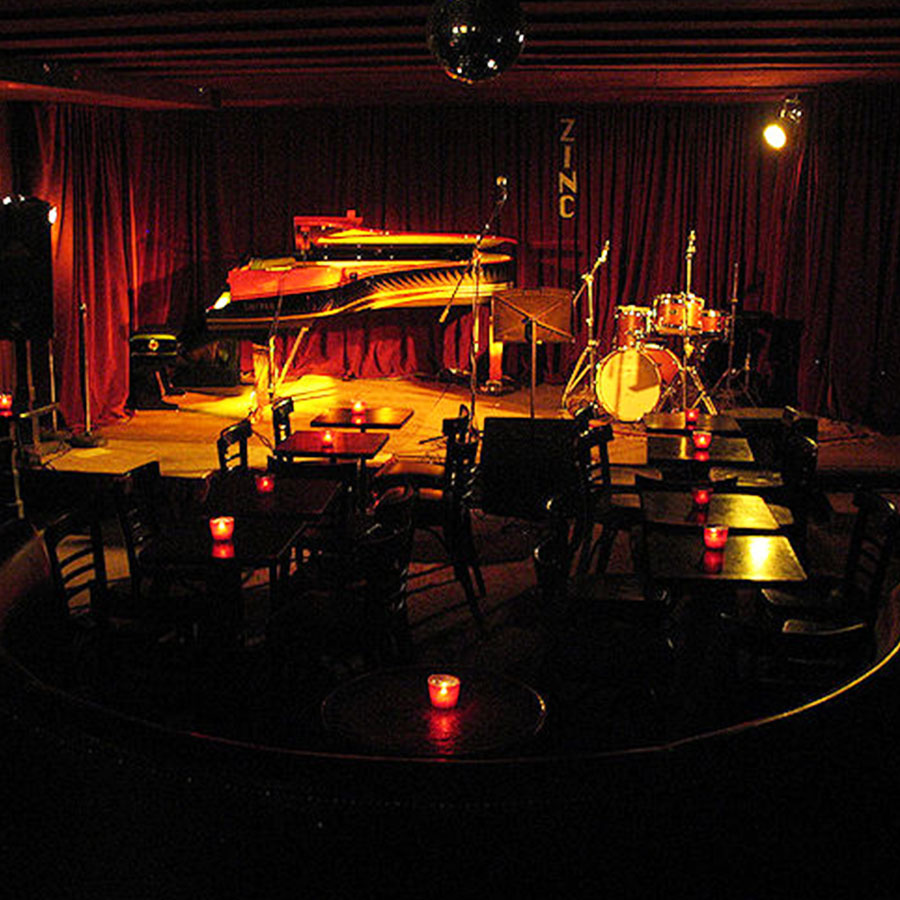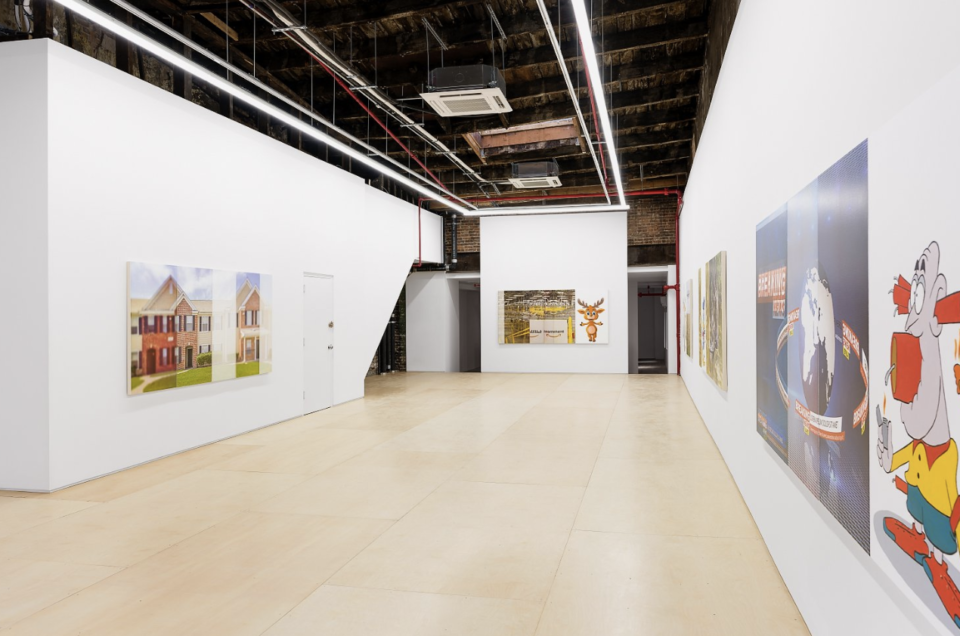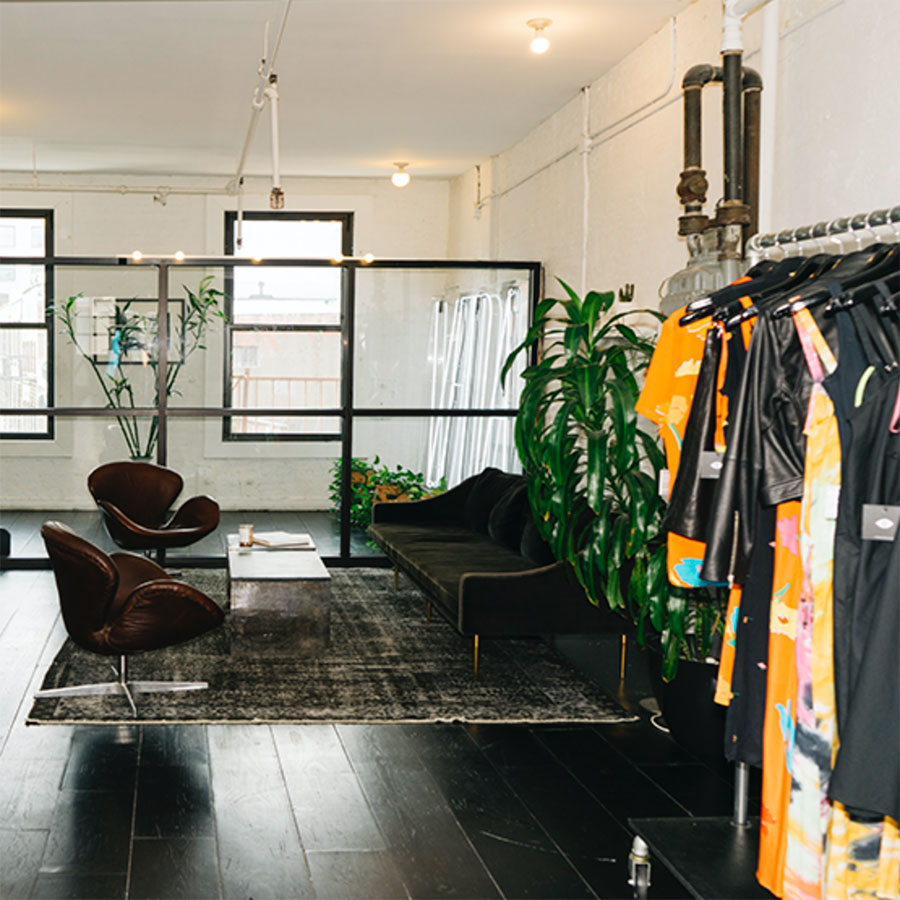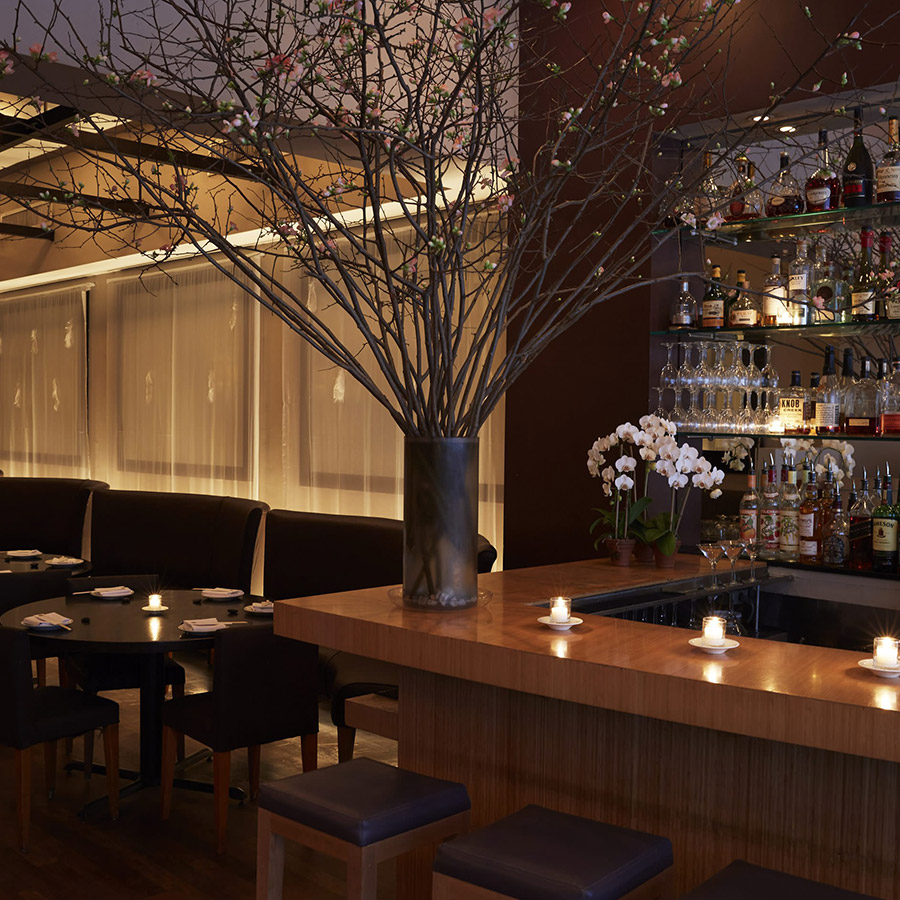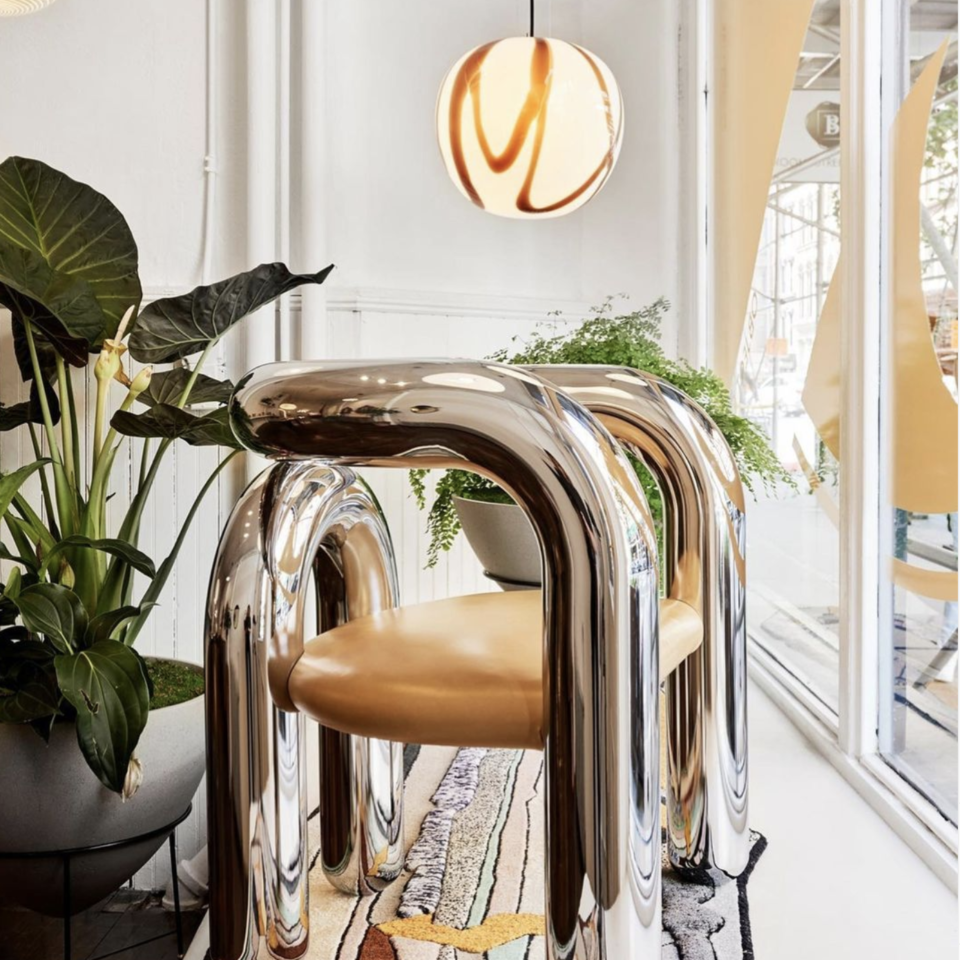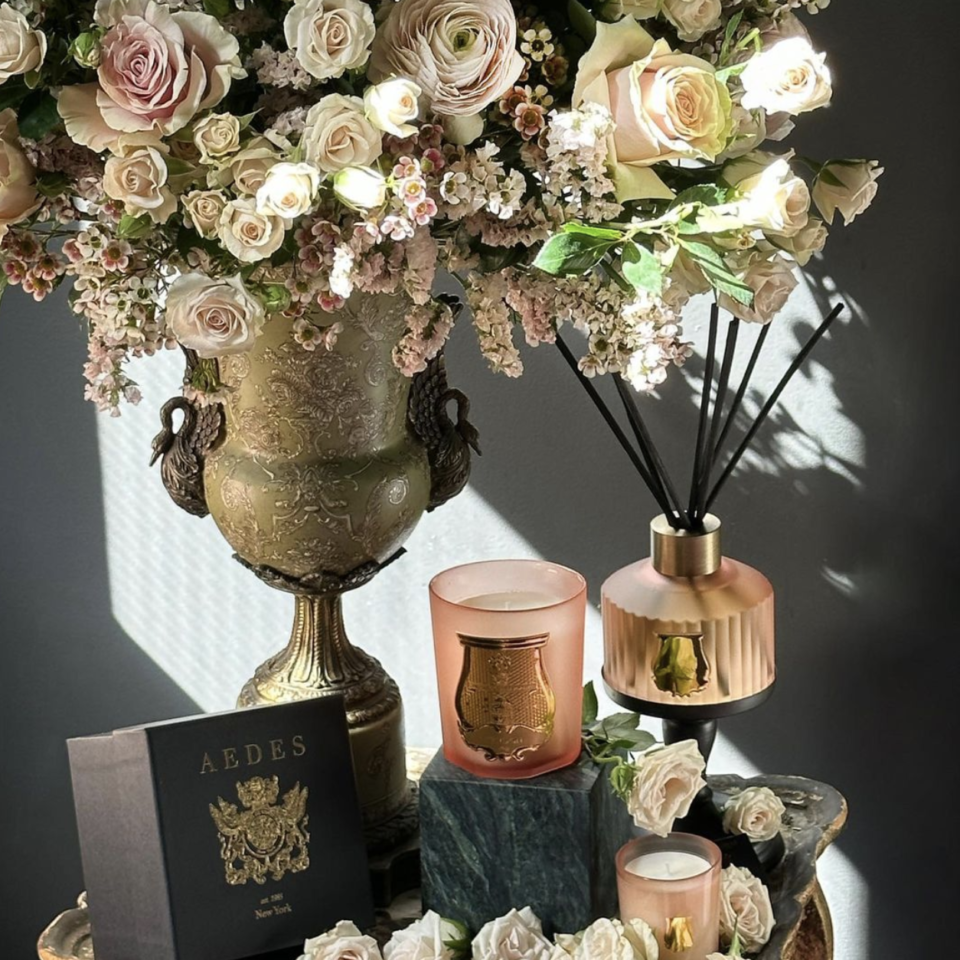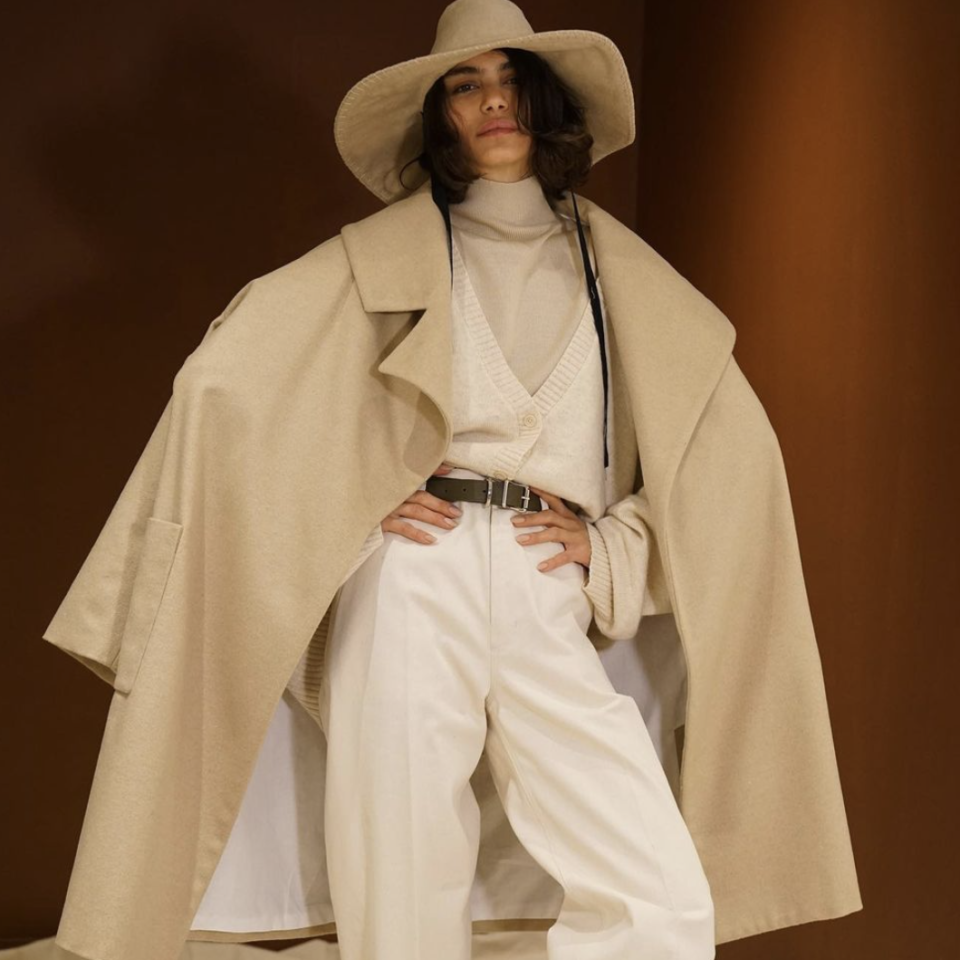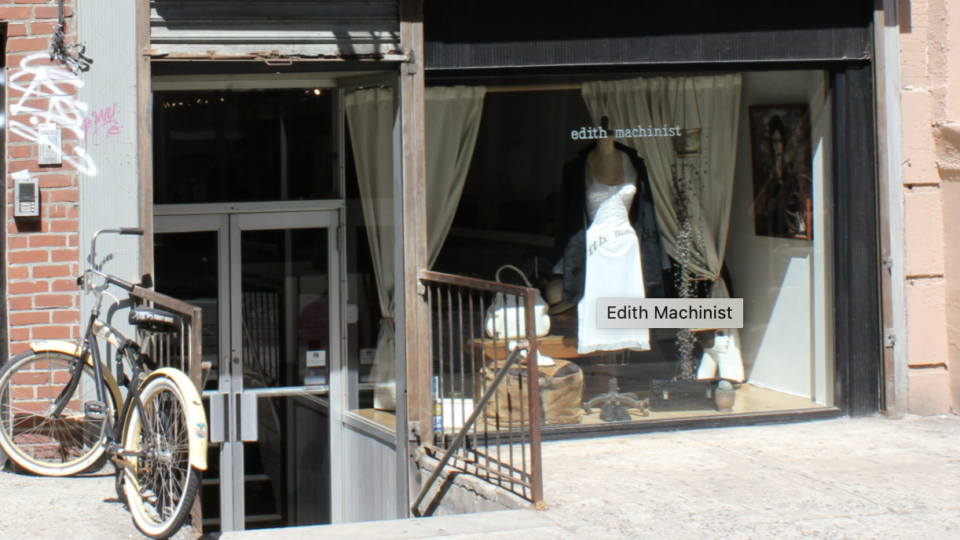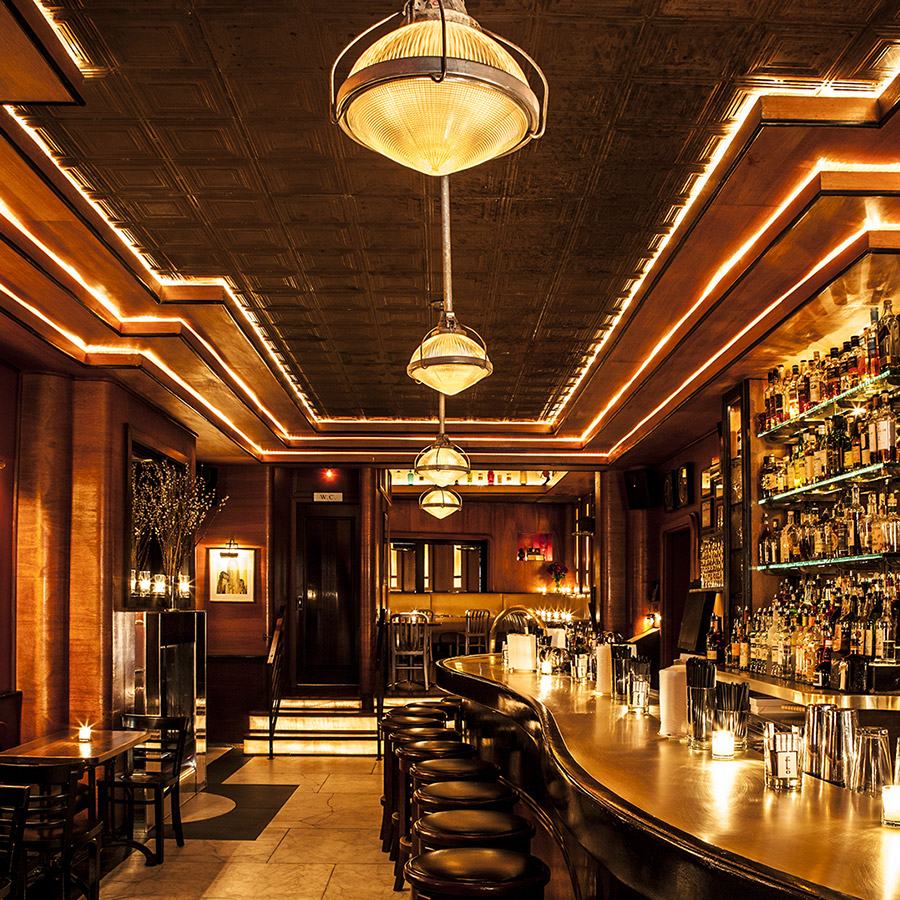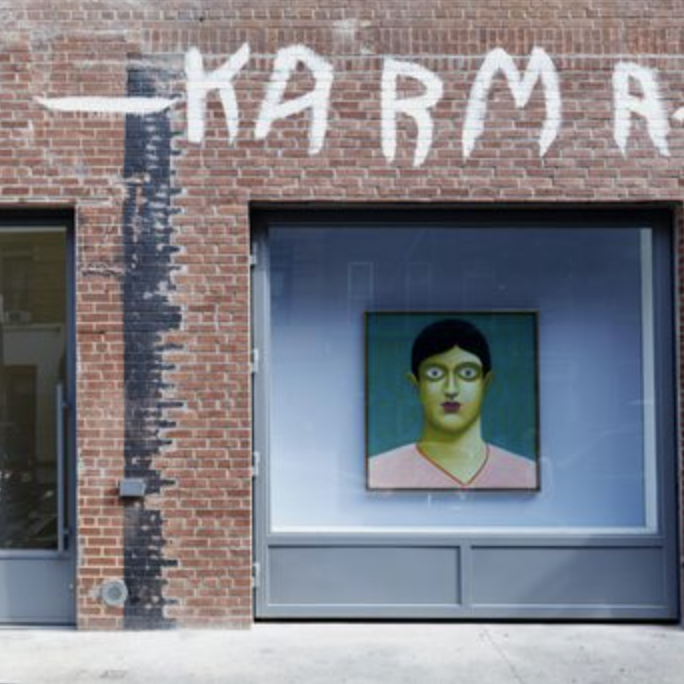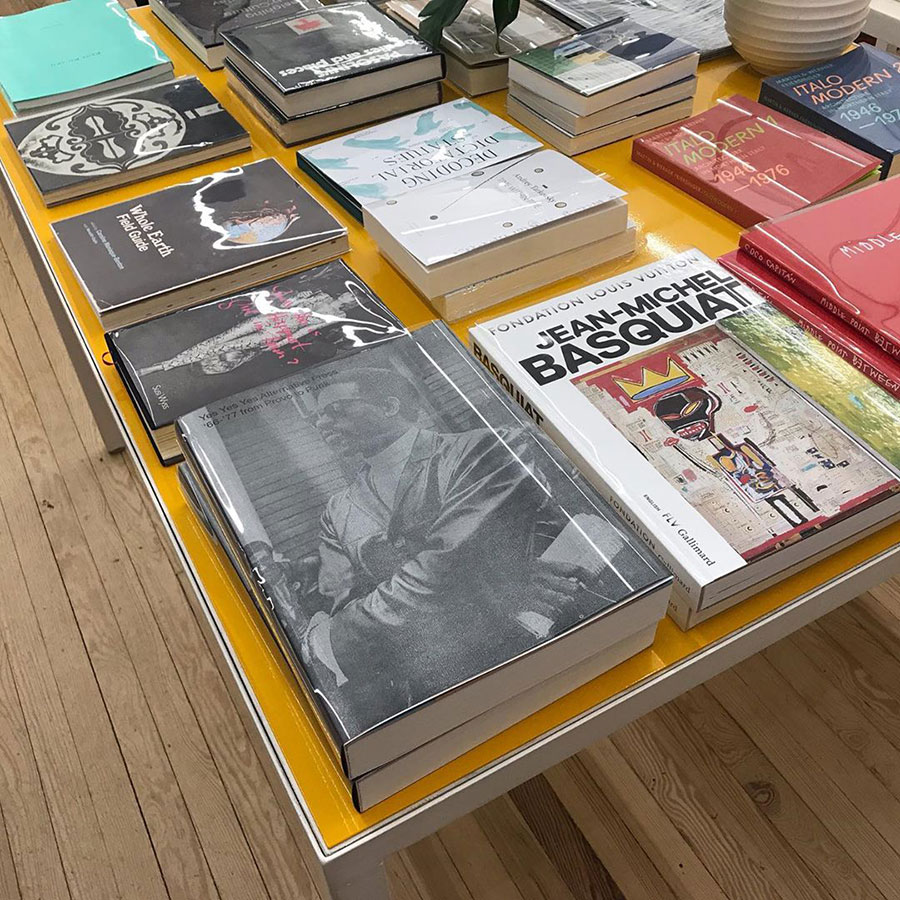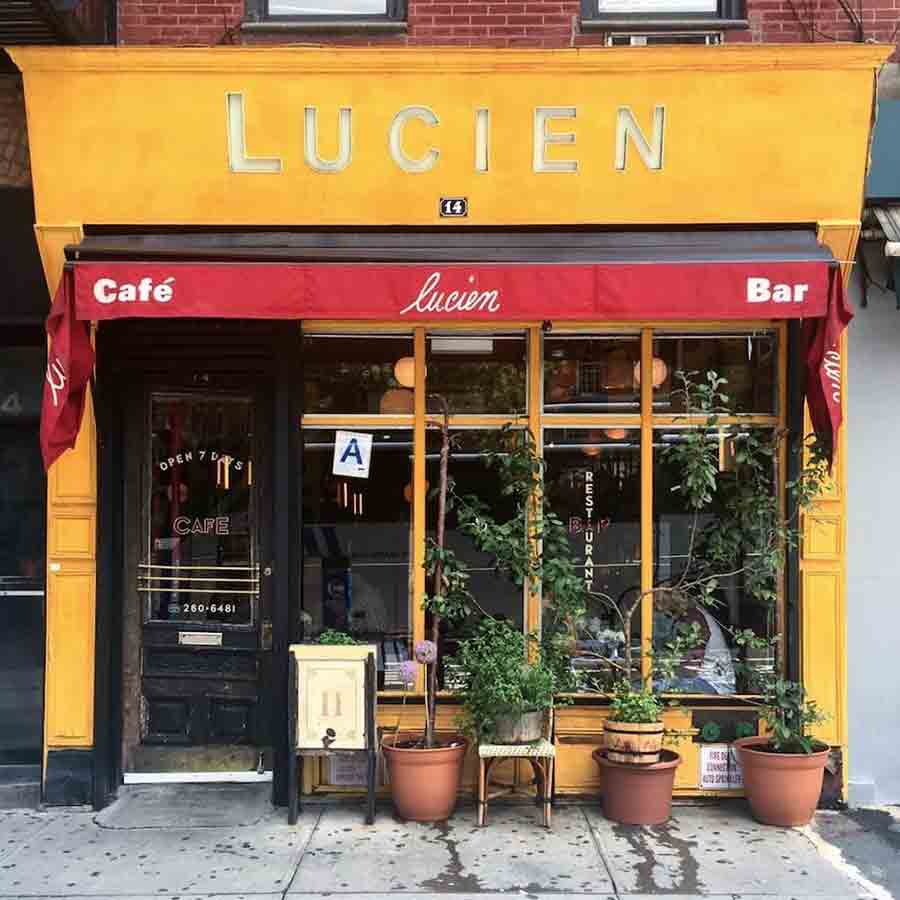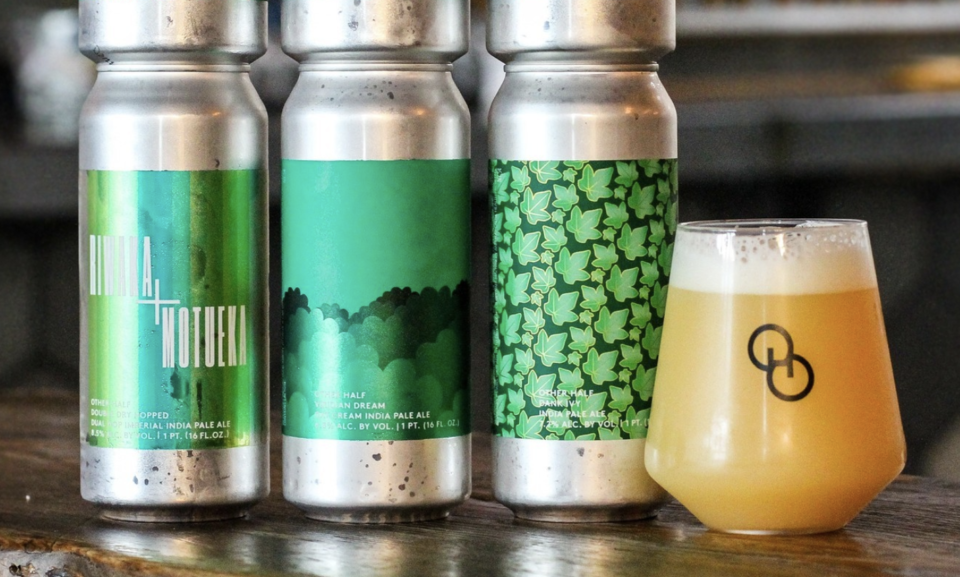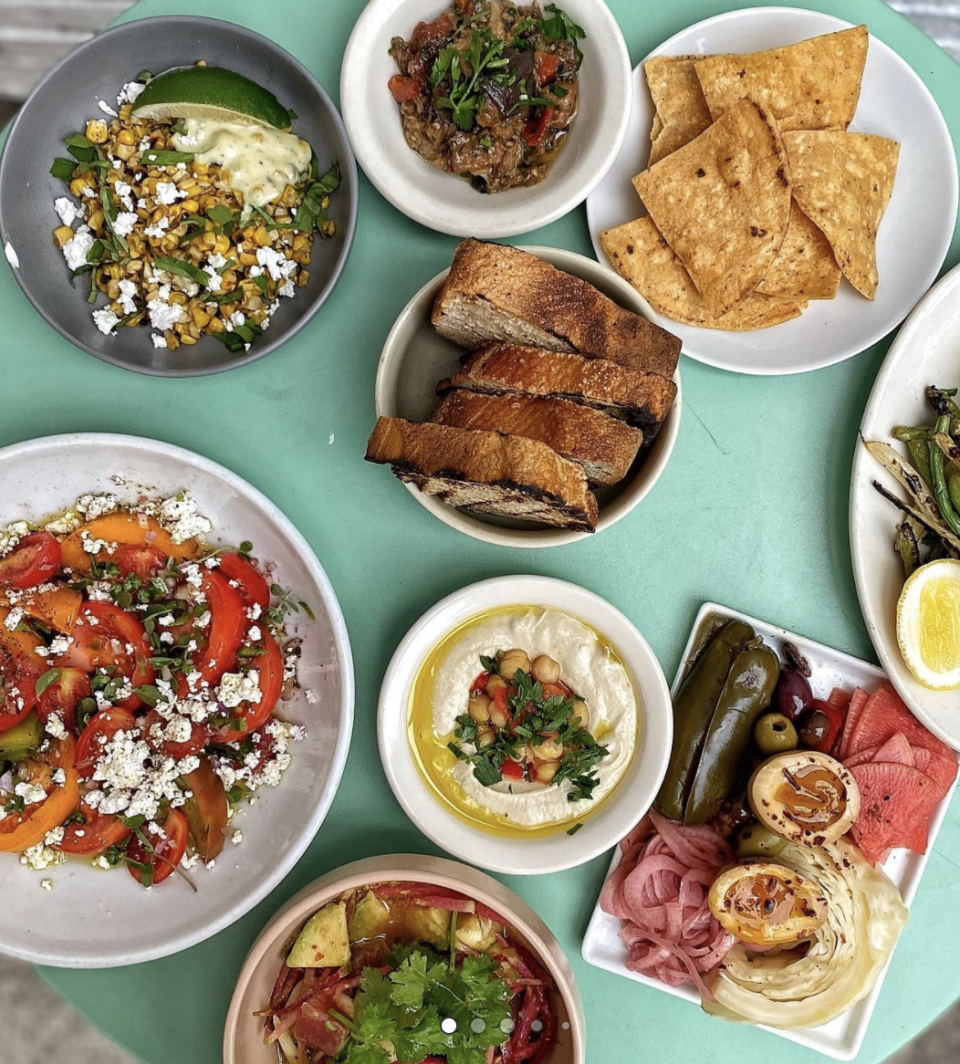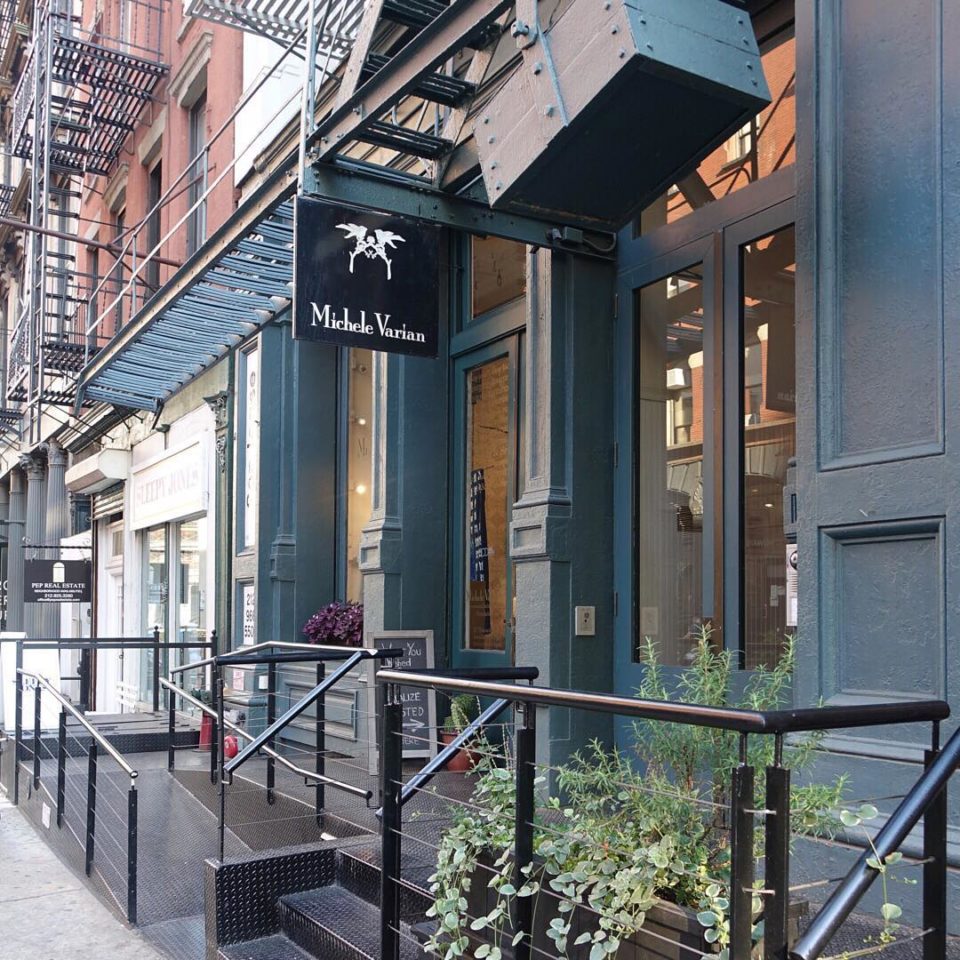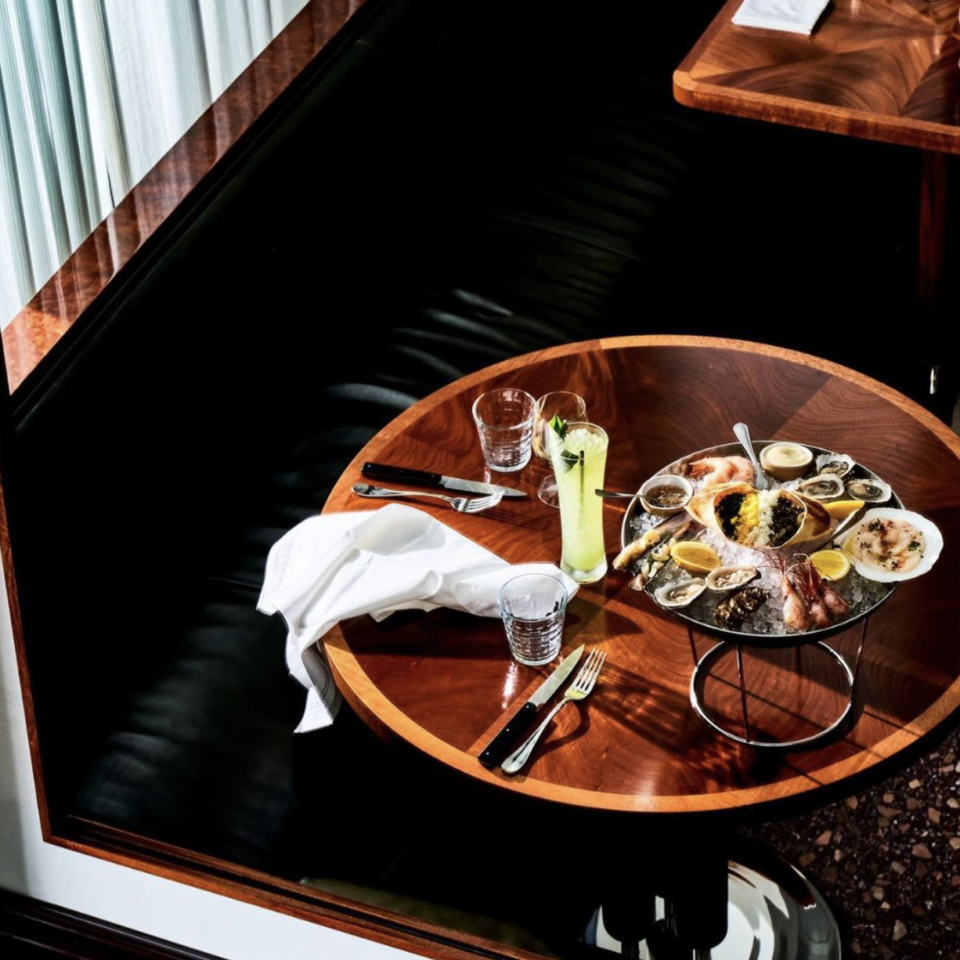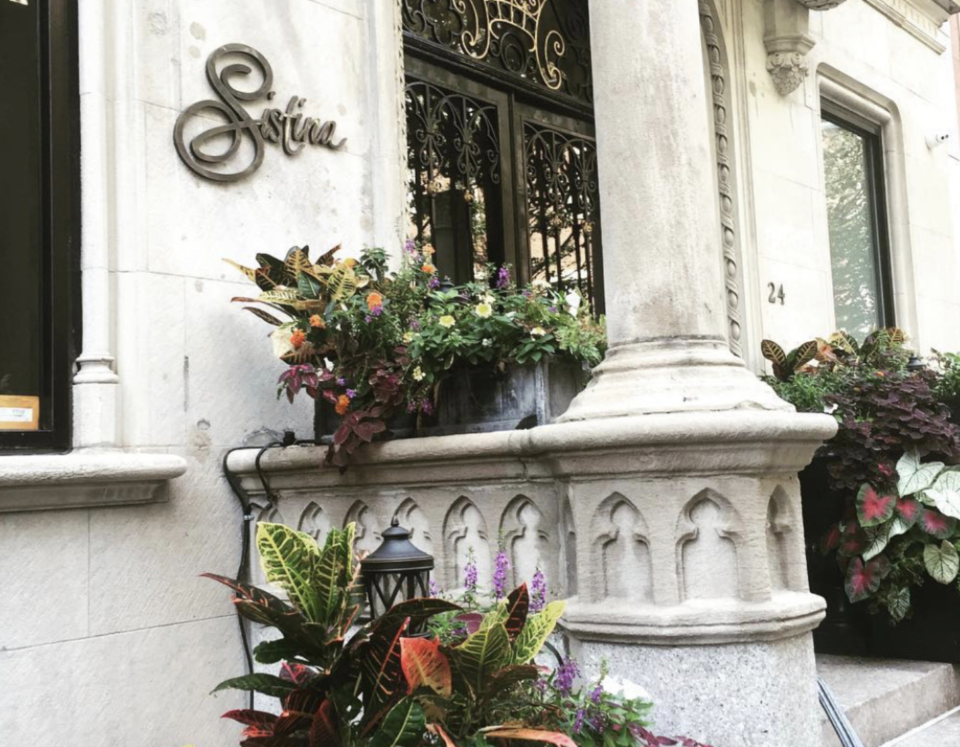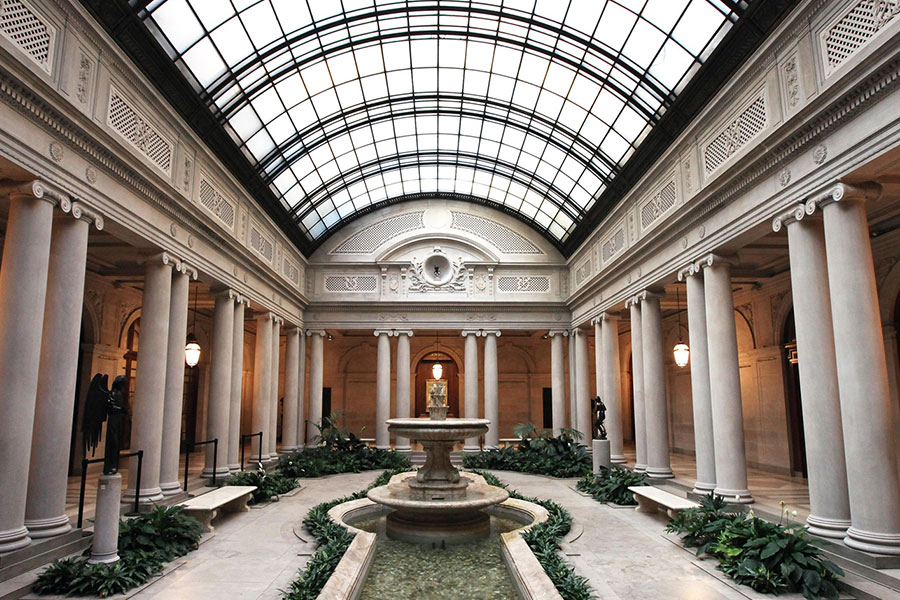BACK TO NEIGHBORHOODS
One of New York City’s oldest neighborhoods, and standing for “Triangle Below Canal Street,” TriBeCa is all cobblestone streets and converted warehouses spliced among stratospheric modern architecture. Local restaurants tend toward upscale, though cozy neighborhood eateries still abound.
New York’s nexus of coveted fashion flagships and upscale boutiques, SoHo (South of Houston Street) is also a wonderland of lofts and cast-iron architecture where sleek hotels, bars, and restaurants cater to the global elite.
Deriving from “North of Little Italy,” this brick and cast-iron bedecked neighborhood is small but big-hearted. Offering a myriad of places to grab a craft coffee, cupcake or pair of boots by a cool-kid label you wouldn’t find anywhere else, Nolita has that independent, locals-only spirit in spades.
Known for its picturesque brownstones and leafy, cobblestone streets, the West Village has historically been home to many literary and artistic legends. Tiny and intimate West Village restaurants with jewel box-like details sit well alongside decades-old dive bars and an iconic cigar shop.
The center of the folk music scene in the ’60s, Greenwich Village still feels as authentic and gritty as a Bob Dylan song (the Nobel-winning bard is a former resident). Come for a picturesque stroll through the brownstone-lined streets, and stay for the underground jazz clubs and neighborhood taverns.
Known for its blue-chip art galleries and soaring above-ground park, Chelsea is also home to a bustling indoor shopping and dining market, and a thriving, all-inclusive nightlife scene.
This vivid, boisterous neighborhood in Lower Manhattan is a jumble of fishmongers and fruit markets, souvenir shops and some of the city's best restaurants, dim sum palaces, and Peking duck houses.
Primarily residential with stunning rowhouses, this bohemian enclave is full of art house theaters, rustic Italian restaurants, and avant-garde retailers.
Historically gritty and home to a close-knit immigrant community, the Lower East Side still oozes with soul but has tipped upscale in recent years with a proliferation of cocktail bars, streetwear shops, and boutique hotels.
Once the epicenter of Manhattan’s ’70s punk scene, the East Village preserves a soulful vibe with its dive bars, vintage boutiques, books, and record shops. A new gloss has arrived with chef-driven restaurants, while the neighborhood’s centerpiece, Tompkins Square Park, is where the locals meet and play.
A hub for artists and entrepreneurs, Brooklyn has countless diverse neighborhoods from ethnic enclaves to hipster havens. Brooklyn restaurants are known for their rusticity and cool factor, whether it’s an iconic $5 pizza slice or an eight-course tasting menu at an under-the-radar sushi spot.
Find stunning pre-war buildings, quiet, tree-lined avenues, and exclusive boutiques on both the Upper East and Upper West Sides of Manhattan, which straddle Central Park. Grand, storied hotels and some of the best art collections in the world also reside here.
Roxy Hotel Ice Cream Cart
entertainment
food & drink
tribeca
Roxy Hotel Ice Cream Cart
entertainment
food & drink
tribeca
The Roxy Hotel will be serving scoops out of a good, old-fashioned ice cream cart on the plaza. A rotating menu of classic flavors including the famous "Roxy Road" will be available Thursday through Sunday!
Manhatta
restaurants
tribeca
Manhatta
restaurants
tribeca
Cocktails with ingredients that walk the line between creative and controversial; Manhatta on the 60th floor is the party you’ll want to return to night after night.
Overstory
bars & nightlife
food & drink
cocktails
overstory
tribeca
tribeca
Overstory
bars & nightlife
food & drink
cocktails
overstory
tribeca
tribeca
Overcome your fear of heights and think glitz and glamour when attending this sky-high cocktail bar.
SAGA
food & drink
restaurants
seafood
tasting menu
tribeca
SAGA
food & drink
restaurants
seafood
tasting menu
tribeca
SAGA brings New Yorkers a magically curated fine-dining experience while perched on the 63rd floor of a landmark Art Deco tower.
Jin Soon
wellness
jin soon
nail salon
tribeca
Jin Soon
wellness
jin soon
nail salon
tribeca
The perfect place for an afternoon mani-pedi, where grooming, beauty and art combine.
Au Cheval
food & drink
restaurants
au cheval
burgers
tribeca
Au Cheval
food & drink
restaurants
au cheval
burgers
tribeca
Au Cheval reimagines traditional fare, from roasted bone marrow to salads to griddled cheeseburgers. Lounge in leather booths and enjoy pulsating tunes.
The Mysterious Bookshop
reading
shopping
bookstore
mystery books
tribeca
The Mysterious Bookshop
reading
shopping
bookstore
mystery books
tribeca
The oldest mystery specialist book store in America stocking the finest selection of new mystery hardcovers, paperbacks and periodicals.
180 The Store
fashion
shopping
concept store
shopping
tribeca
180 The Store
fashion
shopping
concept store
shopping
tribeca
Founded by Denise Williamson, this retail and event space is a luxury boutique and event space showcases brands, designers, and beautifully crafted objects under one roof.
One White Street
food & drink
restaurants
date night
dinner
tribeca
One White Street
food & drink
restaurants
date night
dinner
tribeca
One White Street is a neighborhood restaurant with a globally inspired menu served in a unique townhouse setting.
Frenchette Bakery
coffee & cafés
food & drink
tribeca
Frenchette Bakery
coffee & cafés
food & drink
tribeca
Hit Tribeca brasserie Frenchette has opened a bakery in the old Tribeca Arcade space.
Frenchette
food & drink
restaurants
tribeca
Frenchette
food & drink
restaurants
tribeca
Open Tuesday through Saturday for dinner service in Tribeca on West Broadway, Frenchette offers great cocktails and a full menu of French cuisine.
The Plaza at The Roxy
restaurants
take-out & delivery
tribeca
The Plaza at The Roxy
restaurants
take-out & delivery
tribeca
Dine al fresco under the city skyline on this prime cobblestone corner where Soho meets Tribeca at The Roxy Hotel’s summer escape, The Plaza at The Roxy.
The Odeon
restaurants
take-out & delivery
tribeca
The Odeon
restaurants
take-out & delivery
tribeca
The three-martini lunch stays alive and well at this Tribeca institution, open for outdoor dining, delivery and pickup.
Jungsik
restaurants
tribeca
Jungsik
restaurants
tribeca
A truly special dining experience, opened in 2011 by chef Jungsik Yim with the goal of shifting public perception of Korean cuisine, Jungsik in Tribeca has garnered a reputation as one of the city’s most innovative fine-dining spots.
La Garconne
shopping
tribeca
La Garconne
shopping
tribeca
Since 2005, La Garçonne has stood firmly behind the notion that simplicity is key with its carefully curated offering of men’s and women’s designer wardrobe staples, accessories, beauty products, and lifestyle pieces.
Jack's Stir Brew Coffee
coffee & cafés
coffee & cafés
food & drink
tribeca
Jack's Stir Brew Coffee
coffee & cafés
coffee & cafés
food & drink
tribeca
Jack Mazzola started with an idea and ended up with a culture. Many first-time customers became regulars, and not just for the solid coffee—there’s just something about Jack’s laid-back, old-soul vibe.
Roxy Bar
music
restaurants
tribeca
Roxy Bar
music
restaurants
tribeca
Roxy Bar is the perfect location to meet, work, and relax where delicious appetizers pair thoughtfully with wine and signature cocktails.
Shinola
fashion
shopping
tribeca
Shinola
fashion
shopping
tribeca
Shinola offers a variety of hand-crafted American-made goods ranging from leather-bound pens to watches to bicycles.
Patron of the New
fashion
shopping
tribeca
Patron of the New
fashion
shopping
tribeca
Owner Al Abayan has handpicked the international collection of unique men’s and women’s clothing, accessories, housewares and more from the likes of Korean-American menswear designer Siki Im, Parisian label Établissement and Nicolas Andreas Taralis.
Nobu
food & drink
restaurants
take-out & delivery
tribeca
Nobu
food & drink
restaurants
take-out & delivery
tribeca
A true classic that has stood the test of time in an ever-growing sushi-restaurant scene, currently open for takeout only.
Bubby's
food & drink
restaurants
take-out & delivery
tribeca
Bubby's
food & drink
restaurants
take-out & delivery
tribeca
Bubby’s Pie Company is the real full name here, which makes perfect sense when you see the old-fashioned rotating pie case filled with lattice-top apples and frothy meringues like Mom used to make.
NILI LOTAN
fashion
shopping
tribeca
NILI LOTAN
fashion
shopping
tribeca
Faded motorcycle jackets, cashmere sweaters, and pencil skirts with intricate detailing can be found alongside vintage jewelry and accessories and rare books.
The Django
bars & nightlife
entertainment
food & drink
music
restaurants
tribeca
The Django
bars & nightlife
entertainment
food & drink
music
restaurants
tribeca
Get a taste of Hemingway's Paris without leaving New York City: cocktails, dancing, and all that jazz, at The Django jazz club.
Brandy Library
bars & nightlife
food & drink
tribeca
Brandy Library
bars & nightlife
food & drink
tribeca
This burnished boite is a literal library of dark spirits. Scope the drink menu, a veritable card catalog of spirits with an emphasis on rare and hard-to-find pours.
Smith And Mills
food & drink
restaurants
tribeca
Smith And Mills
food & drink
restaurants
tribeca
No matter what color your collar, Smith & Mills is no run-of-the-mill place.
Takahachi
food & drink
restaurants
tribeca
Takahachi
food & drink
restaurants
tribeca
This is one of our most favorite spots for great sushi at way more relaxed prices than some of its more self-serious sushi neighbors.
THOM BROWNE
shopping
tribeca
THOM BROWNE
shopping
tribeca
Best known for making suits cool again, Browne has amassed a cult following with his eponymous New York-based label’s highly-recognizable slim-fitting men’s jackets and cropped dress pants.
Yves
food & drink
restaurants
tribeca
Yves
food & drink
restaurants
tribeca
On the corner of Greenwich and North Moore sits Yvez, a classic American bistro.
Weather Up
bars & nightlife
restaurants
tribeca
Weather Up
bars & nightlife
restaurants
tribeca
Thanks to Weather Up’s low-key, egalitarian vibe (this is most definitely not a club), it’s easy to be one of them for the night.
Two Hands
restaurants
tribeca
Two Hands
restaurants
tribeca
Graduating from a charming coffee shop to a full-blown restaurant in a little less than 2 years, Two Hands in Tribeca is worth the hype.
BÂTARD
restaurants
tribeca
BÂTARD
restaurants
tribeca
A nod to downtown fine-dining of yore that feels as fresh as it does familiar.
Atera
restaurants
tribeca
Atera
restaurants
tribeca
Some of the city’s most serious food is being served in this tiny, tucked-away Tribeca restaurant.
Aire Ancient Baths
wellness
tribeca
Aire Ancient Baths
wellness
tribeca
Inspired by the legacy of Greek, Roman, and Ottoman baths, as well as the art of water-induced relaxation, AIRE New York aims to turn bathing into a “feast of the senses.”
THE OYSTER BAR AT THE ROXY HOTEL
bars & nightlife
food & drink
restaurants
tribeca
THE OYSTER BAR AT THE ROXY HOTEL
bars & nightlife
food & drink
restaurants
tribeca
The Oyster Bar at The Roxy Hotel is a quintessential mélange of East Coast fare, all delivered daily and sourced from local waters such as Narragansett Bay, NJ, and Olde Salts, VA.
Roxy Cinema
entertainment
film
tribeca
Roxy Cinema
entertainment
film
tribeca
Specializing in classic, independent and foreign film, you’re sure to enjoy the show at the Roxy Cinema.
Club Room
bars & nightlife
Club Room
bars & nightlife
Club Room embodies New York nightlife: glamorous and swanky, filled with music that shimmers with hope and crackles with stakes.
VFILES
shopping
VFILES
shopping
Expect to see covetable designers and brands like Erik Brunetti's Fuct, its higher-end line SSDD, Conflict of Interest, PYREX VISION, Les Plus Dores, X-LARGE, and much more.
SAINT LAURENT
fashion
shopping
SAINT LAURENT
fashion
shopping
Showcasing both the men's and women's collections, as well as the permanent collection, the Saint Laurent Soho flagship store functions as a one-stop destination for all things (Y)SL.
Raoul's
restaurants
take-out & delivery
Raoul's
restaurants
take-out & delivery
Raoul’s is a New York bistro for the books, and only getting better with time.
PRADA
fashion
shopping
PRADA
fashion
shopping
The entire Prada line is here, but the store is also stocked with pieces not on display, so be sure not to miss out and ask.
Pietro Nolita
food & drink
restaurants
Pietro Nolita
food & drink
restaurants
“Pink as f**k” is the slogan for SoHo’s latest and most vibrant addition to Elizabeth Street, Pietro Nolita. The intimate 30-seat restaurant is a colorful oasis with a menu delivering light versions of Italian mainstays with a great cocktail list.
Rag And Bone
shopping
Rag And Bone
shopping
The space reflects the aesthetic of the clothes hung on stark rolling racks separated by gender. Find stacks of coveted super soft minimally-treated denim and pima cotton tees.
PROENZA SCHOULER
shopping
PROENZA SCHOULER
shopping
The 2,500-square-foot space is larger and sleeker than its Madison Avenue sibling, with the ready-to-wear line on the street level and shoes, bags, and leather goods downstairs.
LA MERCERIE
food & drink
restaurants
french restaurant
la mercerie
LA MERCERIE
food & drink
restaurants
french restaurant
la mercerie
This contemporary French eatery feels like a slice of Paris in SoHo. Blue banquettes line the bright space, overlooking a big marble-clad kitchen.
ROMAN AND WILLIAMS GUILD
art & design
shopping
ROMAN AND WILLIAMS GUILD
art & design
shopping
The New York-based design studio Roman and Williams—with smash hit projects like Le Coucou in New York and Broken Shaker in Miami—has turned its attention to something new.
The Webster
fashion
shopping
The Webster
fashion
shopping
There is a lot to love about luxury multi-brand boutique The Webster. Set inside an 1878 cast-iron building on Green Street in New York’s SoHo neighborhood, the 12,000-square-foot and six-floor space is packed with well-chosen high-end pieces.
Shion 69 Leonard Street
food & drink
restaurants
take-out & delivery
Shion 69 Leonard Street
food & drink
restaurants
take-out & delivery
This under-the-radar Japanese restaurant is currently open for takeaway and no-contact delivery.
Lupe's East L.A. Kitchen
restaurants
take-out & delivery
Lupe's East L.A. Kitchen
restaurants
take-out & delivery
Lupe’s brings a slice of East LA to West SoHo in the form of a kaleidoscopic cantina serving California-style Mexican fare as colorful as its surroundings.
M. CROW & COMPANY
art & design
fashion
shopping
M. CROW & COMPANY
art & design
fashion
shopping
Founder and multi-hyphenate designer Tyler Hays is the brains behind the M. Crow operation, a labor-of-love home goods store located on Howard St, SoHo.
MCNALLY JACKSON GOODS FOR THE STUDY
art & design
shopping
MCNALLY JACKSON GOODS FOR THE STUDY
art & design
shopping
Curated by the team behind famed neighborhood bookstore McNally Jackson, Goods for the Study is a stationary store catering to both classic bookworms and modern readers alike.
OUTDOOR VOICES
fashion
shopping
OUTDOOR VOICES
fashion
shopping
The Outdoor Voices storefront has popped up on Centre Street in the heart of our favorite neighborhood, SoHo. Known for “Doing Things,” the activewear company has not only created a collection of technical apparel for recreation, but also a community and a culture.
Off-White's Empty Gallery
art & design
fashion
shopping
Off-White's Empty Gallery
art & design
fashion
shopping
This SoHo gallery-slash-retail store is the handiwork of fashion designer and Louis Vuitton menswear artistic director, Virgil Abloh.
Clic Gallery
shopping
Clic Gallery
shopping
Founded by French-born Christine Celle, Clic Gallery features art, photography, books, fashion and home goods in a beautiful space on Centre Street.
PAINTBOX
uncategorized
PAINTBOX
uncategorized
Paintbox is far from your typical mani, pedi spot, as its 20,000-plus Instagram followers will attest. Paintbox bills itself as a purveyor of “minimalist nail art,” and their cuticle creations have earned them a cult following.
OLIVER PEOPLES
shopping
OLIVER PEOPLES
shopping
The inviting, modern and minimalist setup coupled with ambient music and a super laidback yet uplifting energy make it easy to relax and focus on a good fit.
CAFE ALTRO PARADISO
food & drink
restaurants
CAFE ALTRO PARADISO
food & drink
restaurants
Partner’s Ignacio Mattos and Thomas Carter (Estela) opened Café Altro Paradiso on Spring Street, a traditional Italian restaurant inspired by the fresh take on Italian seasonal cooking.
McNally Jackson Bookstore
shopping
McNally Jackson Bookstore
shopping
A perennial favorite of bookish downtowners, McNally Jackson bears home to one of the most expertly curated collections of books in the city.
MARNI
fashion
shopping
MARNI
fashion
shopping
Reminiscent of the 1960s, the brand has a playful aesthetic, providing a wide range of sophisticated blouses, trousers, standout shoes, and extravagant leather handbags.
MARC JACOBS
fashion
shopping
MARC JACOBS
fashion
shopping
An airy space in SoHo is home for a bevy of casual staples like cozy sweaters and corduroys, as well as shoes, handbags, and accessories.
Lure Fishbar
bars & nightlife
food & drink
restaurants
Lure Fishbar
bars & nightlife
food & drink
restaurants
A SoHo seafood mecca for those with glamorous looks and good taste.
LA SIRENE
food & drink
restaurants
LA SIRENE
food & drink
restaurants
La Sirène is a little French bistro hidden away near the entrance to the Holland Tunnel.
La Esquina
food & drink
restaurants
La Esquina
food & drink
restaurants
La Esquina is a three-part speakeasy on an unassuming corner on Kenmare and Lafayette.
KIRNA ZABÊTE
fashion
shopping
KIRNA ZABÊTE
fashion
shopping
This ultra-elegant, lifestyle store is modern, friendly, and downtown cool.
HENRIK VIBSKOV
art & design
fashion
shopping
HENRIK VIBSKOV
art & design
fashion
shopping
This boutique is clustered with oxidized golden wood that climbs the walls, reconstructed Danish furniture and an eye-catching installation.
GRAND BAR AND SALON
bars & nightlife
entertainment
food & drink
restaurants
GRAND BAR AND SALON
bars & nightlife
entertainment
food & drink
restaurants
The comfortable and glamorous Grand Bar & Salon has become known as “SoHo’s Living Room”—and not only New York locals are welcome to the family.
MORRISON HOTEL GALLERY
art & design
MORRISON HOTEL GALLERY
art & design
This SoHo gallery, named after the B side of The Doors' fifth album, showcases some of the most iconic rock photography ever captured.
FILM FORUM
entertainment
film
FILM FORUM
entertainment
film
The only non-profit cinema in New York City where you can find everything from Hitchcock to African documentaries and Mick Jagger trying to act in a hot tub.
Fanelli Cafe
bars & nightlife
food & drink
restaurants
Fanelli Cafe
bars & nightlife
food & drink
restaurants
Fanelli's has outlived any other tavern in the neighborhood (since 1922 in fact), and for good reason, as a beer and burger here can never disappoint.
Emmett's
food & drink
take-out & delivery
Emmett's
food & drink
take-out & delivery
In a no-frills yet welcoming atmosphere, Emmett's serves Chicago-style deep-dish pizza, albeit a modified version that won the hearts of even the most purist of pizza aficionados. A SoHo favorite!
JIL SANDER
shopping
JIL SANDER
shopping
Lean, crisply tailored resort wear occupies the first floor, with slim-fitting suits and crinkled blazers for men up on the second floor.
MOMA DESIGN STORE
art & design
shopping
MOMA DESIGN STORE
art & design
shopping
Their product selection is as carefully curated as the museum’s fine artwork and includes everything from home décor to retrospective coffee-table books and unique kitchen gadgets.
ISABEL MARANT
shopping
ISABEL MARANT
shopping
Combining androgynous silhouettes with unabashedly feminine fabrics and prints, Marant’s delicate and minimalist signature is showcased on spacious racks, oozing Parisian cool.
CHLOE
fashion
shopping
CHLOE
fashion
shopping
The store is modeled after their new flagship in Paris but still keeps a discerning downtown New York feel.
Charlie Bird
food & drink
restaurants
Charlie Bird
food & drink
restaurants
The food menu leans vaguely Italian and is devoid of the usual constraints of “appetizer” and “main course,” divided instead into raw bar, pasta, and small plates.
CHANEL
fashion
shopping
CHANEL
fashion
shopping
Intricate tweeds, fine jewelry, sunglasses, and marvelous footwear are predominantly adorned with the brand’s symbolic logo and appear throughout.
CELINE
fashion
shopping
CELINE
fashion
shopping
The sleek space, designed in collaboration with Danish artist FOS, offers a full range of the brand’s coveted leather bags and shoes.
INA
fashion
shopping
INA
fashion
shopping
With a cult-like following since 1993, INA is New York’s most established designer consignment store.
Cafe Select
bars & nightlife
entertainment
food & drink
Cafe Select
bars & nightlife
entertainment
food & drink
A dash of Europe in the heart of SoHo, Café Select is a quaint restaurant and bar serving Swiss delicacies on the corner of Lafayette and Kenmare.
BOQUERIA
bars & nightlife
food & drink
restaurants
BOQUERIA
bars & nightlife
food & drink
restaurants
Boqueria is a local tapas joint, offering small plates and tastings of imported ingredients like jamón Serrano and Catalonian goat’s milk cheese.
BLUE RIBBON SUSHI
food & drink
restaurants
BLUE RIBBON SUSHI
food & drink
restaurants
This top-rated jewel in the Blue Ribbon family offers fresh seafood flown in daily from both the Atlantic and Pacific, as well as from the Sea of Japan.
BLUE RIBBON BRASSERIE
bars & nightlife
food & drink
restaurants
BLUE RIBBON BRASSERIE
bars & nightlife
food & drink
restaurants
The unofficial after-hours hangout for chefs, waiters, bartenders and other restaurant industry insiders in search of first-rate fare, Blue Ribbon delivers exactly what its name implies.
RRL
fashion
shopping
RRL
fashion
shopping
Antique signs and animal skulls decorate the space, inspired by Ralph’s Double RL Colorado spread, flanked by jeans, flannel, leather, and suede clothing.
SADELLE'S
food & drink
restaurants
SADELLE'S
food & drink
restaurants
There are several ways to describe Sadelle’s: bagel bakery, neo-appetizing store, and bistro, from baker Melissa Weller and the Major Food Group.
Saturdays NYC
art & design
food & drink
shopping
Saturdays NYC
art & design
food & drink
shopping
Launched to suit a lifestyle occupied with surfing, their cosmopolitan oasis on 31 Crosby Street is part clothing store and part barista.
STELLA MCCARTNEY
shopping
STELLA MCCARTNEY
shopping
Expect to find a slew of ready-to-wear, shoes, bags, sunglasses, lingerie, and more in store. We're pretty confident that you'll love it as much as we do.
THE DUTCH
restaurants
THE DUTCH
restaurants
Inspired by the likes of corner taverns, country inns, seaside shacks, and cultural influences of New York City, The Dutch brings together a well-executed and unique mix of American cuisine.
THE EVOLUTION STORE
shopping
THE EVOLUTION STORE
shopping
Carnivorous plants, perfectly preserved animal skeletons, bugs under glass, fossilized raccoon genitalia, and peculiar seashells are just a few of the interesting items you'll find here.
ZIMMERMAN
shopping
ZIMMERMAN
shopping
Playfully cropped dresses share the racks with edgy yet elegant silk cover-ups, flowing black onesies pair up with bursting floral prints.
WHAT GOES AROUND COMES AROUND
shopping
WHAT GOES AROUND COMES AROUND
shopping
Home to over 100,000 pieces organized by theme and boasting one of the most impressive collections in the city, expect to see stunning pieces by YSL, Pucci, Alaia, and more.
Balthazar
restaurants
Balthazar
restaurants
Keith McNally’s Parisian brasserie is the king of the New York brunch.
BALENCIAGA
shopping
BALENCIAGA
shopping
The famed fashion house founded by Cristobal Balenciaga in 1919 has downtown women's wear and men's wear retail locations in SoHo.
ANGELIKA FILM CENTER
entertainment
ANGELIKA FILM CENTER
entertainment
Find provocative film festival selections from Sundance to Venice playing on six screens.
ALIDORO
restaurants
ALIDORO
restaurants
What brings the crowd are some of the best sandwiches to be found anywhere in New York.
ALEXANDER WANG
shopping
ALEXANDER WANG
shopping
The perfect place for a versatile outfit. You can go from office to happy hour to Yankees game to Chinatown karaoke to Sunday brunch all in the same clothes.
AGNÈS B.
shopping
AGNÈS B.
shopping
Part gallery and part boutique, Agnès b. is a rustically elegant street-level loft complete with hardwood floors, iron-cast columns, exposed brick, and potted pink and white flowers.
AGENT PROVOCATEUR
shopping
AGENT PROVOCATEUR
shopping
Known for its craftsmanship, fit, playfulness and use of beautiful fabrics, Agent Provocateur’s luxurious offering is confident, sensual and irreverent.
ACNE
shopping
ACNE
shopping
The store is a mix of clothes and design featuring a men’s and women’s collection that includes ready-to-wear lines, accessories, and of course, jeans.
3×1
shopping
3×1
shopping
The selection consists of more than 115 unique selvedge denim from around the world and more than 60 varieties of non-selvedge denim, stretch denim and twill.
3.1 PHILLIP LIM
shopping
3.1 PHILLIP LIM
shopping
Here, Lim’s award-winning women's and men's collections and accessories—shoes, belts, handbags, eyewear, and seasonal runway jewelry plus in-store exclusives—can be found under the one roof.
King
uncategorized
King
uncategorized
With a daily changing menu, King makes a damn fine case for dining on seasonal Southern Italian fare every night of the week.
Gilligan's
restaurants
take-out & delivery
Gilligan's
restaurants
take-out & delivery
Stop by or order in for a taste of the tropics—signature bites and cocktails to go (watermelon margarita, anyone?). Open every day for outdoor dining, takeout, and delivery.
Ganni
shopping
Ganni
shopping
With its Scandi-cool-girl aesthetic and fearless mishmash of prints and textures, Ganni has become a crowd favorite.
Maison Kitsuné
art & design
Maison Kitsuné
art & design
Part brand, part record label, Maison Kitsuné is proof that life should be lived well and with a sense of playfulness.
Posteritati
art & design
shopping
Posteritati
art & design
shopping
A cinephile’s dream and so much more, Posteritati is championed for its diverse collection of original movie memorabilia from over 30 countries. The gallery is currently closed but online orders and shipping are still being accepted.
The RealReal
shopping
The RealReal
shopping
The RealReal, has completely upended the consignment store concept, first with their e-commerce platform and then with the opening of their brick-and-mortar store.
Byredo
shopping
wellness
Byredo
shopping
wellness
Byredo’s New York Flagship store—sleek, minimal, inviting—is a haven for scent memory by way of fragrances, candles, bath oils, and body lotions from the cult Stockholm luxury house.
Smile To Go
coffee & cafés
Smile To Go
coffee & cafés
From the team behind popular, subterranean café The Smile, Smile to Go offers health-focused Mediterranean-inspired fare for people on the move.
Deitch Projects
art & design
Deitch Projects
art & design
Bold, visionary, and always three steps ahead, Deitch Projects is a gallery to have on your radar.
Élan Flowers
shopping
Élan Flowers
shopping
For over three decades our neighbors at Élan Flowers have been making SoHo a more beautiful place with their impeccable arrangements. The elegant boutique tucked quietly on the corner of 6th and Grand Street serves as our go-to for all our floral needs.
Leslie Lohman Museum of Art
art & design
leslie-lohman museum
lgbtq+
museum
Leslie Lohman Museum of Art
art & design
leslie-lohman museum
lgbtq+
museum
The Leslie-Lohman Museum of Art is the only dedicated LGBTQ+ art museum in the world with a mission to exhibit and preserve LGBTQ+ art and foster the artists who create it.
Aēsop
wellness
aesop
skincare
soho
Aēsop
wellness
aesop
skincare
soho
The service and ambience at this clean and simple store is impeccable with friendly and knowledgable staff pleased to introduce the range and guide selections.
AMI
fashion
shopping
ami
shopping
AMI
fashion
shopping
ami
shopping
Created in Paris and inspired by the city ever since, AMI offers stylish and comprehensive wardrobes for men and women.
Noah
fashion
shopping
Noah
fashion
shopping
Noah merges the rebellious vitality of skate, surf, and music cultures with an innovative appreciation of classic menswear.
Sea
fashion
shopping
Sea
fashion
shopping
Sea offers collections that are at once both effortless and optimistic, romantic and boyish.
Oroboro
fashion
shopping
nolita
Oroboro
fashion
shopping
nolita
Chic, upscale boutique selling women's casualwear, shoes, jewelry & accessories, plus art & decor.
Jac's on Bond
bars & nightlife
food & drink
music
restaurants
nolita
Jac's on Bond
bars & nightlife
food & drink
music
restaurants
nolita
What used to be The Smile is now a new see-and-be-seen cocktail lounge from the same team behind Midtown’s Pebble Bar. Expect caprese martinis, as well as small bites from the duo behind Wildair and Contra.
Feste
art & design
entertainment
shopping
nolita
Feste
art & design
entertainment
shopping
nolita
With an entirely new approach to gathering, this Soho boutique has everything you need to be a modern party host.
Courrèges
fashion
shopping
nolita
Courrèges
fashion
shopping
nolita
Explore the '60s Space Age through André Courrèges vision.
Torrisi
bars & nightlife
restaurants
nolita
Torrisi
bars & nightlife
restaurants
nolita
A bustling bar, two dining rooms, and a menu inspired by Little Italy and the city’s beloved culinary traditions.
Temple Bar
bars & nightlife
wellness
nolita
Temple Bar
bars & nightlife
wellness
nolita
This iconic NoHo cocktail haven serves up new and traditional mixes alongside a short menu of cocktail-perfect food.
Prince Street Pizza
restaurants
take-out & delivery
pizza
prince street pizza
nolita
Prince Street Pizza
restaurants
take-out & delivery
pizza
prince street pizza
nolita
Square pies named for streets in the neighborhood nourish and amuse at this NoLita pizzeria.
Compagnie des Vins Surnaturels
bars & nightlife
food & drink
compagnie des vins surnaturels
wine bar
nolita
Compagnie des Vins Surnaturels
bars & nightlife
food & drink
compagnie des vins surnaturels
wine bar
nolita
A French-heavy wine list is paired with French and Mediterranean small plates in this rustic-chic bar.
Despaña
food & drink
nolita
Despaña
food & drink
nolita
Since 1971, this chic shop and tapas bar has come to represent a reliable and respected source for those looking for authentic Spanish flavors.
Credo Beauty
shopping
wellness
nolita
Credo Beauty
shopping
wellness
nolita
The largest collection of safe, clean beauty products, and sustainable supplies in a bright and minimalist space.
Corridor
fashion
nolita
Corridor
fashion
nolita
This NY-based, independent brand captures the spirit of NYC with solid fits, high-quality textiles, and subtle branding.
The Meadow
food & drink
nolita
The Meadow
food & drink
nolita
Elemental ingredients like salt, chocolate, bitters, and pantry items are curated by experts at this cozy Mulberry Street specialty store.
Schott NYC
fashion
nolita
Schott NYC
fashion
nolita
Schott NYC is a century-old boutique selling iconic, high-end leather motorcycle jackets, shoes and other apparel.
Bottega Velasca
fashion
nolita
Bottega Velasca
fashion
nolita
Artisanal men's shoes of the highest-quality craftsmanship in a moody yet welcoming space.
Di Palo’s Fine Foods
food & drink
take-out & delivery
nolita
Di Palo’s Fine Foods
food & drink
take-out & delivery
nolita
This specialty Italian store in Little Italy offers artisanal cheeses, cured meats, pasta, sauce and pantry items, and is currently taking phone orders for pickup.
Rubirosa
restaurants
take-out & delivery
nolita
Rubirosa
restaurants
take-out & delivery
nolita
This Nolita spot famous for its vodka-sauced pizza is open for delivery and to go. Call 212-965-0500 or order through Caviar.
Wayan
food & drink
take-out & delivery
nolita
Wayan
food & drink
take-out & delivery
nolita
The first solo venture from Cédric Vongerichten (son of Jean-Georges), Wayan serves Indonesian cuisine with a modern French twist. Available for delivery or pickup.
No. 6 Store
shopping
nolita
No. 6 Store
shopping
nolita
Upon entering this sharply curated, light-filled store it is clear that No. 6 is for women who derive pleasure from cultivating their own distinctive style.
Aimé Leon Dore
shopping
nolita
Aimé Leon Dore
shopping
nolita
This New York City-based fashion and lifestyle brand owes its trademark high-low mashup of street and tailored essentials to the culture imbued in the borough from which it was born—Queens.
D.S. and Durga
shopping
nolita
D.S. and Durga
shopping
nolita
This luxury perfume house founded by husband-and-wife team David Seth Moltz and Kavi Moltz offers small-batch unique fragrances created in-house.
Indochine
restaurants
nolita
Indochine
restaurants
nolita
Since 1984, Indochine has been an amalgam of tropical-bordello décor, French-Vietnamese cuisine, and a playground for artists and celebrities.
Pietro Nolita
food & drink
restaurants
nolita
Pietro Nolita
food & drink
restaurants
nolita
“Pink as f**k” is the slogan for SoHo’s latest and most vibrant addition to Elizabeth Street, Pietro Nolita. The intimate 30-seat restaurant is a colorful oasis with a menu delivering light versions of Italian mainstays with a great cocktail list.
Pasquale Jones
food & drink
restaurants
nolita
Pasquale Jones
food & drink
restaurants
nolita
This Nolita hotspot from the team behind Charlie Bird has been described as a brick-oven pizza restaurant, however, should not be labeled so simply.
NUDIE JEANS BOWERY REPAIR SHOP
fashion
shopping
nolita
NUDIE JEANS BOWERY REPAIR SHOP
fashion
shopping
nolita
There are many reasons to love Nudie Jeans. One of the biggest? They are among the few denim lines in production that are organic, unisex, committed to sustainability.
LOVELY DAY
food & drink
restaurants
nolita
LOVELY DAY
food & drink
restaurants
nolita
This charming Nolita eatery offers unlikely environs for its tasty Thai cuisine: floral wallpaper, lampshades, red leather booths and an old soda fountain.
LOVE ADORNED
art & design
shopping
wellness
nolita
LOVE ADORNED
art & design
shopping
wellness
nolita
Love Adorned is a jewelry and lifestyle boutique, carrying everything from handcrafted jewelry to home goods to travel accessories and many more eye-catching wares.
LE LABO
shopping
wellness
nolita
LE LABO
shopping
wellness
nolita
When it comes to fragrance, Le Labo is one of the most enjoyable shopping experiences you can have.
GOODS FOR THE STUDY
shopping
nolita
GOODS FOR THE STUDY
shopping
nolita
Whether outfitting a new office or simply browsing, it’s impossible not to leave inspired.
ESTELA
food & drink
restaurants
nolita
ESTELA
food & drink
restaurants
nolita
Estela falls into that appealing new class of restaurants that turn out fine-dining caliber fare, minus the upscale fussiness
DUNCAN QUINN
fashion
shopping
nolita
DUNCAN QUINN
fashion
shopping
nolita
The slim, fitted ensembles are an interesting and original mix of traditional English tailoring and attention-grabbing designs, from pinstripes to brightly colored linings.
JACK'S WIFE FREDA
restaurants
nolita
JACK'S WIFE FREDA
restaurants
nolita
Jack’s Wife Freda is a comfortable, casual eatery that is pleasantly buzzing (if not totally jammed) almost any time of day.
INA
fashion
shopping
nolita
INA
fashion
shopping
nolita
With a cult-like following since 1993, INA is New York’s most established designer consignment store.
CAFE HABANA
food & drink
restaurants
nolita
CAFE HABANA
food & drink
restaurants
nolita
Located in a former old-school Dominican diner and inspired by a Mexico City lunch joint, Café Habana’s food is 100 percent Cuban.
CAFE GITANE
food & drink
restaurants
nolita
CAFE GITANE
food & drink
restaurants
nolita
By day, it's the perfect spot for a latte and baked eggs. By night, we recommend you cozy up with a glass of Bordeaux and meatballs.
Il Buco
restaurants
nolita
Il Buco
restaurants
nolita
With a menu that changes nightly, fresh seafood fare is the order of the day.
RUBY'S
food & drink
restaurants
nolita
RUBY'S
food & drink
restaurants
nolita
Ruby’s prides itself on using fresh local produce balanced with Australian culinary influences to provide some of the best food, espresso coffee, and drinks in the city.
SEL RROSE
bars & nightlife
nolita
SEL RROSE
bars & nightlife
nolita
An oyster and cocktail bar that pays homage to both early-20th-century Paris and the mid-19th-century Bowery.
THE MUSKET ROOM
restaurants
nolita
THE MUSKET ROOM
restaurants
nolita
Focused on New Zealand-inspired cuisine, The Musket Room is located in the thriving neighborhood of NoLIta.
Commerce Inn
restaurants
west village
Commerce Inn
restaurants
west village
An American tavern and cookery serving heirloom recipes with a focus on fresh and straightforward fare inspired by heritage recipes.
The Mermaid Inn
food & drink
west village
The Mermaid Inn
food & drink
west village
The Mermaid Inn is a spot-on rendition of a casual New England fish shack, complete with style, warm hospitality and classic seafood fare.
McNulty's Tea
coffee & cafés
wellness
west village
McNulty's Tea
coffee & cafés
wellness
west village
A visit to McNulty’s is like a journey into another age and sensory dimension with only the finest coffee and tea from around the world.
Nami Nori
food & drink
west village
Nami Nori
food & drink
west village
Nami Nori is a casual yet elegant temaki bar offering a unique sushi dining experience full of exciting flavor combinations.
The Whitney Museum Of American Art
art & design
west village
The Whitney Museum Of American Art
art & design
west village
While the Museum is closed temporarily, engage with American art through its rich array of online resources, or join virtually for online events.
4 Charles Prime Rib
food & drink
west village
4 Charles Prime Rib
food & drink
west village
Supper club, speakeasy, steakhouse, Michelin-Guide approved restaurant—4 Charles Prime Rib is all these things and more.
Pastis
restaurants
west village
Pastis
restaurants
west village
A beloved New York institution, Pastis long-awaited second iteration in the Meatpacking District is steps away from the original, which opened in the early aughts and fast became a modern classic.
Via Carota
restaurants
west village
Via Carota
restaurants
west village
This West Village trattoria is the Italian restaurant every New Yorker wishes was on their doorstep. It’s an ideal blend of rustic and refined, with a menu for every type of craving.
Sant Ambroeus
restaurants
west village
Sant Ambroeus
restaurants
west village
Dine at Sant Ambroeus in West Village NYC for old-world Milanese authenticity. The Pâtisserie and espresso bar is popular for breakfast and lunch.
Smalls Jazz Club
music
west village
Smalls Jazz Club
music
west village
The show must go on. Smalls is streaming live and offering access to its archive of shows since ’07. Become a member and support the Smalls community of musicians.
Don Angie
restaurants
west village
Don Angie
restaurants
west village
Don Angie, an Italian-American eatery, sits on the corner of Greenwich Avenue in the heart of the West Village.
Employees Only
bars & nightlife
west village
Employees Only
bars & nightlife
west village
A notable hidden cocktail bar with a constantly buzzing downtown crowd as bartenders dressed in white jackets move seamlessly throughout the space.
Banter
restaurants
west village
Banter
restaurants
west village
Australians seem to always know what they’re doing when it comes to coffee shops and cafés, and Banter is no exception.
Fairfax
bars & nightlife
west village
Fairfax
bars & nightlife
west village
With its worn leather couches, rugs, coffee tables, indoor plants, and selection of art, Fairfax is your new home away from home.
SUSHI NAKAZAWA
food & drink
restaurants
west village
SUSHI NAKAZAWA
food & drink
restaurants
west village
Delicious, raw dishes with an impeccable omakase presentation.
Barbuto
food & drink
restaurants
west village
Barbuto
food & drink
restaurants
west village
Since opening in 2004, Barbuto has become a true West Village classic. The fare is always seasonal, and one of those places where it’s hard to go wrong with anything on the menu.
Jeffrey's Grocery
food & drink
restaurants
west village
Jeffrey's Grocery
food & drink
restaurants
west village
The guys behind this welcoming West Village American eatery couldn’t have it more right. The staff is delightfully friendly, the service impeccable, the vibe intimate and inclusive, and the food is served up fresh and with a smile.
Shuka
food & drink
restaurants
west village
Shuka
food & drink
restaurants
west village
This Eastern Mediterranean go-to on MacDougal Street brings to life rustic, vibrant flavors found throughout Italy, Morocco, and Tunisia.
JOSEPH LEONARD
food & drink
restaurants
west village
JOSEPH LEONARD
food & drink
restaurants
west village
If you speak to any New Yorker living in the West Village, they will tell you that Joseph Leonard is a mainstay in their restaurant repertoire.
ODIN
fashion
shopping
west village
ODIN
fashion
shopping
west village
Known for its fantastic service and style, this NoLIta outpost is where elegance, streetwear, and accessories converge—just for men, that is.
Buvette
food & drink
restaurants
west village
Buvette
food & drink
restaurants
west village
Upon stepping inside this West Village hideaway you feel as though you have been transplanted to Aix-en-Provence. Exposed brick walls and wrought iron details set the scene for a charming space, perfect for an intimate gathering with friends, or a solo wine seated at the long marble bar with a favorite book.
MINETTA TAVERN
bars & nightlife
food & drink
restaurants
west village
MINETTA TAVERN
bars & nightlife
food & drink
restaurants
west village
The menu includes the much-talked-about Black Label burger, which features a blend of skirt, brisket, short rib, and a secret cut, along with simple brasserie-style dishes.
Diptyque
shopping
wellness
west village
Diptyque
shopping
wellness
west village
Open the door to the Parisian perfumer's West Village shop and step into a modern-day boudoir.
COMME DES GARCONS
fashion
shopping
west village
COMME DES GARCONS
fashion
shopping
west village
Things are always changing here but one thing never will: New York’s fashionable elite will always be diehards for the latest creations at this Westside hotspot.
BOOKMARC
art & design
shopping
west village
BOOKMARC
art & design
shopping
west village
The cleverly titled Bookmarc stocks international fashion and design magazines, making this a one-stop-shop for those in the know.
THE LITTLE OWL
restaurants
west village
THE LITTLE OWL
restaurants
west village
The perfect afternoon nest in the West Village may only have 30 seats, but the food is a big deal.
THE JOYCE THEATER
entertainment
west village
THE JOYCE THEATER
entertainment
west village
One of the most premiere dance venues, hosting over 270 national and international small to medium sized dance companies.
The Waverly Inn
restaurants
west village
The Waverly Inn
restaurants
west village
With handpainted murals of Allen Ginsberg, E.E. Cummings, and Fran Leibowitz, you can expect to see the same literary types at the table next to you.
THREE LIVES AND COMPANY
shopping
west village
THREE LIVES AND COMPANY
shopping
west village
One of the last bastions of old New York bookstores.
BAR PITTI
restaurants
west village
BAR PITTI
restaurants
west village
When the weather calls for al fresco dining, savvy New Yorkers head to Bar Pitti. This West Village trattoria is the “see and be seen” place of summer.
BABBO
restaurants
west village
BABBO
restaurants
west village
Leave the kids at home when venturing into the exciting Italian dining experience of Babbo, one of Mario Batali's Michelin-rated restaurants in New York.
AESOP
shopping
west village
AESOP
shopping
west village
Your one-stop shop for all your skin, hair, and body needs.
Cecchi's
art & design
bars & nightlife
food & drink
greenwich village
Cecchi's
art & design
bars & nightlife
food & drink
greenwich village
An American Bistro with a very chic crowd. Checchi's has made its mark by "making everyone feel like a regular"
LLADRÓ
art & design
shopping
greenwich village
LLADRÓ
art & design
shopping
greenwich village
Lladró is the story of the passion for porcelain of three brothers, Juan, José and Vicente Lladró. Artists who made porcelain into a way of life and managed to build a business empire with their own hands.
Donna
bars & nightlife
food & drink
restaurants
greenwich village
Donna
bars & nightlife
food & drink
restaurants
greenwich village
DONNA is a worker-owned restaurant and cocktail bar located in the West Village, offering a pan-Latin menu with Mediterranean influences.
Yara
wellness
greenwich village
Yara
wellness
greenwich village
A time-conscious experience for ambitious people. Yara salon was designed with stations that are perfect for two professionals to perform a mani & blowout simultaneously!
Two : Minds
fashion
shopping
greenwich village
Two : Minds
fashion
shopping
greenwich village
A new retail experience spanning luxury, street, heritage, and emerging designers. The result is two : minds.
Dame
food & drink
restaurants
dame
seafood
greenwich village
Dame
food & drink
restaurants
dame
seafood
greenwich village
Relaxed seafood eatery offering hearty mains, small plates and classic cocktails, plus an outdoor terrace.
Dante
bars & nightlife
food & drink
greenwich village
Dante
bars & nightlife
food & drink
greenwich village
The century-old bar and restaurant is one of Greenwich Village’s most beloved stomping grounds and best Italian restaurants.
Semma
food & drink
indian cuisine
semma
greenwich village
Semma
food & drink
indian cuisine
semma
greenwich village
Semma is an exploration of heritage Southern Indian cuisine that has rarely been seen outside of local homes and neighborhoods.
Carmine Street Guitars
music
greenwich village
Carmine Street Guitars
music
greenwich village
Helmed by master luthier Rick Kelly, Carmine Street Guitars in Greenwich Village is a beacon of bohemia New York.
LLama San
food & drink
greenwich village
LLama San
food & drink
greenwich village
Erik Ramirez seamlessly integrates Peruvian and Japanese cuisine in his two-room Greenwich Village restaurant.
Mimi
restaurants
greenwich village
Mimi
restaurants
greenwich village
This petite French bistro located on a quiet Greenwich Village block is big in all the right ways. The food, classic French cooking, is full of flavor and Parisian flair.
Babs
restaurants
greenwich village
Babs
restaurants
greenwich village
From the team behind Mimi, this scaled-down 55-seat bistro on MacDougal Street in Greenwich Village takes its cues from Vienna and the Basque Country.
Mezzrow Jazz Club
bars & nightlife
music
greenwich village
Mezzrow Jazz Club
bars & nightlife
music
greenwich village
Upon entering Mezzrow, you descend a set of steps to the long narrow venue where the stage is set for the music to flow effortlessly through the room every night of the week.
EMPELLON TAQUERIA
food & drink
restaurants
greenwich village
EMPELLON TAQUERIA
food & drink
restaurants
greenwich village
Influenced, but not limited by authenticity, Empellon’s menu strays far from the average downtown Mexican joint.
I SODI
food & drink
restaurants
greenwich village
I SODI
food & drink
restaurants
greenwich village
From the people behind Via Carota and Buvette, i Sodi brings classic, Tuscan cuisine in the heart of the West Village.
MARY'S FISH CAMP
food & drink
restaurants
greenwich village
MARY'S FISH CAMP
food & drink
restaurants
greenwich village
Lobster rolls here are everything you want—rich, buttery seafood enveloped in an airy, fluffy bun.
LUPA
food & drink
restaurants
greenwich village
LUPA
food & drink
restaurants
greenwich village
Billing itself as an “Osteria Romana,” this casual restaurant with a warm and lively atmosphere is a Greenwich Village take on a traditional Roman trattoria.
LORING PLACE
food & drink
restaurants
greenwich village
LORING PLACE
food & drink
restaurants
greenwich village
Located in the heart of Greenwich Village, Loring Place is Chef Dan Kluger’s first restaurant after serving years as the Executive Chef of ABC Kitchen and ABC Cocina.
IFC CENTER
entertainment
film
greenwich village
IFC CENTER
entertainment
film
greenwich village
The IFC Center, NYC’s ultimate entertainment space for New Yorkers seeking out the best in independent film, opened in June 2005 in the historic Waverly Theater.
CLAUDETTE
food & drink
restaurants
greenwich village
CLAUDETTE
food & drink
restaurants
greenwich village
The folks at Claudette deserve applause for having given fresh life to a frequently shuttered address, transforming it into a light-filled, airy space with French country accents.
Carbone
food & drink
restaurants
take-out & delivery
greenwich village
Carbone
food & drink
restaurants
take-out & delivery
greenwich village
The restaurant pays homage to the essence of the great Italian-American restaurants of the mid-20th century in New York, with familiar, comforting dishes.
ROSEMARY'S
food & drink
restaurants
greenwich village
ROSEMARY'S
food & drink
restaurants
greenwich village
Another West Village 'go to'—a bustling, warm and open restaurant with fresh food.
TEA and SYMPATHY
food & drink
restaurants
greenwich village
TEA and SYMPATHY
food & drink
restaurants
greenwich village
“Keep Calm and Carry On,” advises a framed poster upon entrance to Tea & Sympathy. Next to it peeks a portrait of the Royal Family, along with every kind of British memorabilia possible.
VILLAGE VANGUARD
entertainment
greenwich village
VILLAGE VANGUARD
entertainment
greenwich village
Over the decades, hundreds of jazz musicians, spanning a number of generations and aesthetic viewpoints, converged here to blow their brass horns and wail their melodies.
Zinc Bar
entertainment
greenwich village
Zinc Bar
entertainment
greenwich village
All flavors of jazz seem to be represented at Zinc Bar, from funk and fusion to New Orleans and orchestral jazz. Performers hail from Morocco, Greece, Cuba, and beyond.
Jack Shainman Gallery
art & design
Jack Shainman Gallery
art & design
From inception, the Gallery has championed artists from diverse multicultural backgrounds who engage in the social and cultural issues of their time. Head to the Gallery's online viewing room for its most recent exhibitions.
Printed Matter
art & design
Printed Matter
art & design
Founded in 1976 by a group of individuals working in the arts, the nonprofit bookstore and gallery was established in response to the growing interest in publications created by artists.
GAGOSIAN GALLERY
art & design
GAGOSIAN GALLERY
art & design
Along with art world luminaries such as Jeff Koons and Richard Prince, Gagosian’s A-list roster of artists also includes Damien Hirst.
DAVID ZWIRNER
art & design
DAVID ZWIRNER
art & design
David Zwirner Galleries five-storied exhibition and project space on 20th Street.
ABC KITCHEN
restaurants
ABC KITCHEN
restaurants
Jean Georges still has the Midas touch: ABC Kitchen, his farm-to-table Flatiron favorite was named best new restaurant of 2011 by the James Beard Foundation.
ABC CARPET AND HOME
art & design
shopping
ABC CARPET AND HOME
art & design
shopping
This massive warehouse-like emporium offers high-end pieces in styles for any taste from antique to mid-century to the purely modern.
Academy Records and CDs
shopping
Academy Records and CDs
shopping
Everything here is a score due to its location in close proximity to the aging art elite.
Ye's Apothecary
bars & nightlife
food & drink
chinatown
Ye's Apothecary
bars & nightlife
food & drink
chinatown
Offering unique cocktails and Szechuan-influenced tapas this is the perfect place for a spicy dish and a spicy date.
Paradise of Replica
entertainment
shopping
chinatown
Paradise of Replica
entertainment
shopping
chinatown
Buy and sell records in a voyage through Japanese technopop, new wave, post-punk, experimental, and ambient with an emphasis on the 80s underground.
Helena Anrather Gallery
art & design
art
art gallery
helena anrather gallery
chinatown
Helena Anrather Gallery
art & design
art
art gallery
helena anrather gallery
chinatown
If you're looking to expand your art portfolio or simply want to spend a day gallery hopping, stop by this experimental exhibition space for artists at all stages of their careers.
James Veloria
fashion
shopping
chinatown
James Veloria
fashion
shopping
chinatown
Inspired by innovative design and the use of bold colors and patterns, this vintage store is packed with unique, exciting, and iconic pieces
Chinese Tuxedo
restaurants
chinatown
Chinese Tuxedo
restaurants
chinatown
Taking its name from Chinatown's first fine dining restaurant, Chinese Tuxedo features a menu of reimagined traditional Chinese banquet dishes by international executive chef, Paul Donnelly.
Nom Wah Tea Parlor
food & drink
take-out & delivery
chinatown
Nom Wah Tea Parlor
food & drink
take-out & delivery
chinatown
Opened in 1920, Nom Wah has maintained its reputation for dim sum delights in a charming, old-world setting.
Veda
shopping
chinatown
Veda
shopping
chinatown
What started out as a purely leather-focused brand has expanded to a full ready-to-wear line, achieving high praise along the way.
Apotheke
bars & nightlife
chinatown
Apotheke
bars & nightlife
chinatown
Located on a hidden street in Chinatown, this former opium den was transformed into a specialty cocktail bar, tipping its hat to the absinthe dens of 19th-century Paris, with a dash of old-fashioned apothecary thrown in.
JOE'S SHANGHAI RESTAURANT
restaurants
chinatown
JOE'S SHANGHAI RESTAURANT
restaurants
chinatown
At Joe’s Shanghai Restaurant, an unassuming spot in the heart of Chinatown, the dumplings are freshly made to order.
Raf's
coffee & cafés
food & drink
restaurants
noho
Raf's
coffee & cafés
food & drink
restaurants
noho
From the team behind Nolita's Musket Room, Raf’s is a cozy new French spot in Noho that feels like a modest chateau.
Acme Downstairs
bars & nightlife
restaurants
acme
bar
noho
noho
Acme Downstairs
bars & nightlife
restaurants
acme
bar
noho
noho
Resident DJs mix all your favourite nostalgic tracks, and leather booths and low lighting provide all you need for a great night out.
ACME
food & drink
restaurants
noho
ACME
food & drink
restaurants
noho
Formerly a New Nordic restaurant, Acme has been reinvented as a New American bistro. That means thoughtful cocktails, quality bar snacks, and main menu with everything from kale Caesar salad to brick chicken with shitake mushrooms.
BOHEMIAN
noho
BOHEMIAN
noho
This Zen Japanese, members-only restaurant and bar is far from your casual, last-minute dining option. In order to secure a table at Bohemian, you need time, patience, and ideally a referral from a member (someone who has dined at Bohemian previously).
LAFAYETTE
food & drink
restaurants
noho
LAFAYETTE
food & drink
restaurants
noho
The largest all-day French bistro NoHo has ever seen.
JOHN VARVATOS BOWERY
shopping
noho
JOHN VARVATOS BOWERY
shopping
noho
Varvatos pays his respects to what musically was by hosting in-store performances, so be on the lookout for sporadic shows.
JOHN DERIAN COMPANY
shopping
noho
JOHN DERIAN COMPANY
shopping
noho
This cozy and charming home-décor and knickknack shop is filled with a nice selection of Derian's own découpage glassware.
IL MULINO
bars & nightlife
food & drink
restaurants
noho
IL MULINO
bars & nightlife
food & drink
restaurants
noho
The vibe here is Old World; black-suited Italian waitstaff are solicitous and formal, the dining room is dim and cozy, and prices are unabashedly high.
BONDST
food & drink
restaurants
noho
BONDST
food & drink
restaurants
noho
BONDST provides fresh, exciting Japanese offerings in a cooler than cool setting surrounded by beautiful waiters and diners alike.
3.1 PHILLIP LIM
shopping
noho
3.1 PHILLIP LIM
shopping
noho
Here, Lim’s award-winning women's and men's collections and accessories—shoes, belts, handbags, eyewear, and seasonal runway jewelry plus in-store exclusives—can be found under the one roof.
Chinato
bars & nightlife
food & drink
restaurants
lower east side
Chinato
bars & nightlife
food & drink
restaurants
lower east side
Chinato co-owner and bar director Ray Zhou is an alum of the Lower East Side’s Double Chicken Please and brings a similar playful spirit to his cocktail bar.
Madeline's Martini
bars & nightlife
entertainment
food & drink
lower east side
Madeline's Martini
bars & nightlife
entertainment
food & drink
lower east side
Your glass will never go dry (unless of course that is how you take your Martini). As the name suggests, Madeline's martinis come in a handful of varieties and every option is better than the next at this new East Village haunt.
Matter
art & design
shopping
lower east side
Matter
art & design
shopping
lower east side
Matter is a New York City based gallery, showroom, and manufacturer, representing a refined selection of national and international contemporary design.
Foul Witch
bars & nightlife
food & drink
restaurants
lower east side
Foul Witch
bars & nightlife
food & drink
restaurants
lower east side
Foul Witch is an upscale wine bar by Carlo Mirarchi & Brandon Hoy located in Alphabet City, serving a menu that brings the magic!
Aedes Perfumery
fashion
shopping
wellness
lower east side
Aedes Perfumery
fashion
shopping
wellness
lower east side
A seductive fragrance sanctuary with scented candles, potpourris, perfumes, soaps, and skin care products all displayed on ornate etageres and damask-covered tables.
Kallmeyer
fashion
shopping
lower east side
Kallmeyer
fashion
shopping
lower east side
Kallmeyer is a New York-based RTW and accessories brand that reimagines everyday staples as an elevated and refined modular wardrobe for modern, empowered womxn.
Desert Vintage
shopping
lower east side
Desert Vintage
shopping
lower east side
A great source for excellent, one-of-a-kind vintage pieces of quality and flair.
Casino
bars & nightlife
food & drink
restaurants
lower east side
Casino
bars & nightlife
food & drink
restaurants
lower east side
Leaning into our collective nostalgia and love for the glamour of coastal Italian fare—that’s Casino.
Corner Bar
food & drink
restaurants
lower east side
Corner Bar
food & drink
restaurants
lower east side
From acclaimed chef Ignacio Mattos, Corner Bar is a restaurant inspired by legendary bistros and taverns in cities around the world.
Ending Soon
fashion
shopping
lower east side
Ending Soon
fashion
shopping
lower east side
If you are shopping for pieces that would have been seen on the 1999 red carpet, Ending Soon has the hand-selected contemporary classic wear of your dreams.
Susan Alexandra
art & design
fashion
lower east side
Susan Alexandra
art & design
fashion
lower east side
Step aside minimalists, these beaded handbags and headbands covered in rainbows and butterflies are for the crowd with a playful, more-is-more approach to style.
The Grand Delancey
bars & nightlife
lower east side
The Grand Delancey
bars & nightlife
lower east side
A craft beer bar in The Market Line on NYC's Lower East Side featuring 50 drafts and select bottles.
The Cast
fashion
shopping
custom
leather jacket
shopping
t shirt
lower east side
The Cast
fashion
shopping
custom
leather jacket
shopping
t shirt
lower east side
Thank goodness for vinyl, liquid eyeliner, and The Cast: a leather-forward cult NYC clothing brand and shop for punk rock fashions, accessories, records, and books.
Dana Foley
fashion
shopping
clothing
dresses
vintage
lower east side
Dana Foley
fashion
shopping
clothing
dresses
vintage
lower east side
A vintage clothing store for the glam tomboy carrying carefully selected time-honored pieces along with its house brand designed by Dana Foley herself.
Forgetmenot
bars & nightlife
food & drink
bar
cocktails
dinner
lower east side
Forgetmenot
bars & nightlife
food & drink
bar
cocktails
dinner
lower east side
This funky taverna lures locals with drinks and simple American-Mediterranean dishes for brunch and dinner.
Mel
coffee & cafés
bakery
bread
fresh baked
pastrie
lower east side
Mel
coffee & cafés
bakery
bread
fresh baked
pastrie
lower east side
Mel is a small bakery focused on serving its neighborhood and community first. Offering a rotating selection of naturally leavened sourdough bread, pastry, coffee, and light fare.
Dirt Candy
restaurants
dinner
vegetarian
lower east side
Dirt Candy
restaurants
dinner
vegetarian
lower east side
This modern East Village restaurant is the kind of place to bring your out-of-town vegetarian friend to show them what New York creativity is all about.
Skin Contact
lower east side
Skin Contact
lower east side
Skin Contact is an unpretentious natural wine bar on the LES where you can drink something unusual. Small production, minimal intervention wines are the focus at this dimly lit haunt.
Edith Machinist
fashion
lower east side
Edith Machinist
fashion
lower east side
A vintage boutique that serves as a design resource for the fashion industry and a costume resource for TV, film, and theater.
Pause Cafe
coffee & cafés
coffee & cafés
restaurants
take-out & delivery
acai bowl
cafe
coffee
lower east side
Pause Cafe
coffee & cafés
coffee & cafés
restaurants
take-out & delivery
acai bowl
cafe
coffee
lower east side
Cozy coffeehouse serving breakfast, sandwiches and smoothies in a homey space with Moroccan accents.
Downtown Music Gallery
art & design
lower east side
Downtown Music Gallery
art & design
lower east side
Downtown Music Gallery is a long-running, internationally regarded record store and performance space for music lovers.
Essex Market
food & drink
lower east side
Essex Market
food & drink
lower east side
Essex Market is a unique shopping experience showcasing a diverse collection of goods. Offering specialty foods, incredible restaurants, and unique items all under one roof.
Bacaro
restaurants
lower east side
Bacaro
restaurants
lower east side
Bacaro is a candlelit basement Italian eatery serving pasta and Venetian small plates alongside Italian wines.
ATTABOY
bars & nightlife
lower east side
ATTABOY
bars & nightlife
lower east side
The very small speakeasy with a frequently locked door is helmed by mixologists from Milk & Honey, which was originally housed in the same space.
Katz's Delicatessen
restaurants
take-out & delivery
lower east side
Katz's Delicatessen
restaurants
take-out & delivery
lower east side
Katz’s remains open for takeout and delivery through most delivery services. Orders can also be placed via phone at 212-254-2246.
Ten Bells
restaurants
take-out & delivery
lower east side
Ten Bells
restaurants
take-out & delivery
lower east side
This cozy LES go-to for organic wine and small plates is offering curbside pick-up and same-day delivery for orders placed before 3pm.
Bode
shopping
lower east side
Bode
shopping
lower east side
Founder and designer Emily Bode has created a space where customers can enjoy a private shopping experience while they relax and peruse Bode’s selection of one-of-a-kind items, designed and tailor-made in New York.
Ray's
bars & nightlife
lower east side
Ray's
bars & nightlife
lower east side
Ray's Bar on the Lower East Side pays homage to New York's iconic dive bars. Cheap beer, wood paneling, leather banquet seats, and kitsch wall art are part of the no-frills charm.
Assembly
shopping
lower east side
Assembly
shopping
lower east side
Assembly has been a New York go-to for designer clothing, accessories and vintage pieces since 2008.
Only NY
shopping
lower east side
Only NY
shopping
lower east side
Only NY opened the doors to its Lower East Side flagship in 2012. The concept behind the business was to create something intrinsically New York from which their own personal interests could bleed through.
Dimes
coffee & cafés
restaurants
lower east side
Dimes
coffee & cafés
restaurants
lower east side
This Chinatown eatery has had wild success since opening their original 18-seat outpost with a menu reflective of the creative people who frequent this health-minded diner.
Wildair
restaurants
take-out & delivery
lower east side
Wildair
restaurants
take-out & delivery
lower east side
Wildair, an a la carte bistro by the owners of sister restaurant Contra, delivers on all fronts. The interiors are low-key yet refined, the vibe is warm and inclusive, and the menu goes the distance with a multitude of market-driven small plates and a refined wine list.
Contra
restaurants
take-out & delivery
lower east side
Contra
restaurants
take-out & delivery
lower east side
The warmth of Contra’s intimate dining room, the outstanding service and very well chosen and unique wine list make it a real contender for New York's top tasting menu. Just say yes to the tasting and fully trust your Somm and you can’t go wrong.
Cervo's
restaurants
take-out & delivery
lower east side
Cervo's
restaurants
take-out & delivery
lower east side
The team behind Cervo’s has mastered the art of deceptively simple food. If you love seafood, small plates, and a well-curated wine list, this place is a must.
New Museum
art & design
lower east side
New Museum
art & design
lower east side
Designed by Kazuyo Sejima and Ryue Nishizawa of SANAA, Tokyo, the New Museum is a monumental undertaking.
PULQUERIA
food & drink
restaurants
lower east side
PULQUERIA
food & drink
restaurants
lower east side
A secret Aztec subterranean den that provides a double dose of atmosphere, both bar and restaurant, Pulqueria dishes out authentic Mexican cuisine.
KIKI’S GREEK TAVERN
food & drink
restaurants
lower east side
KIKI’S GREEK TAVERN
food & drink
restaurants
lower east side
This tried-and-tested favorite on the Lower East Side entices with tasty Greek cuisine and a buzzy atmosphere at a price that is more than fair.
BAR BELLY
food & drink
restaurants
lower east side
BAR BELLY
food & drink
restaurants
lower east side
Oysters, small bites, and specialty cocktails in a dimly-lit narrow space located on the Lower East Side, Bar Belly is the perfect spot to settle in for the night with your closest allies.
Coming Soon
art & design
shopping
lower east side
Coming Soon
art & design
shopping
lower east side
From furniture and home goods to accessories and one-of-a-kind gifts, Coming Soon is a fun place to find some real treasures.
MERCURY LOUNGE
bars & nightlife
entertainment
lower east side
MERCURY LOUNGE
bars & nightlife
entertainment
lower east side
Mercury Lounge has perfected the recipe for booking up-and-coming acts at affordable prices, housing them in an intimate-enough atmosphere and consistently attracting high-energy crowds.
MOMOFUKU KO
food & drink
lower east side
MOMOFUKU KO
food & drink
lower east side
Dinner is a set tasting menu based largely on market availability devised by the chef and his aides de camp, and it is usually about 10 courses long.
FREEMANS
food & drink
restaurants
lower east side
FREEMANS
food & drink
restaurants
lower east side
The impossibly cool interior of Freemans Restaurant is part hunting lodge, part taxidermy diorama with stuffed heads and dark woods galore.
MOMOFUKU NOODLE BAR
food & drink
lower east side
MOMOFUKU NOODLE BAR
food & drink
lower east side
Using traditional French cooking techniques to create an Asian fusion menu, diners can choose from an array of Korean, Japanese, and Chinese inspired dishes.
DECIBEL
bars & nightlife
food & drink
lower east side
DECIBEL
bars & nightlife
food & drink
lower east side
By far the best sake bar in the city, Decibel’s small basement location is designed with dark wood, red paper lanterns, and graffiti-covered walls.
DEATH & COMPANY
bars & nightlife
food & drink
lower east side
DEATH & COMPANY
bars & nightlife
food & drink
lower east side
Hidden behind an inconspicuous wooden door, the dimly-lit lounge pays homage—re-invents even—pre-prohibition cocktail.
BOWERY BALLROOM
bars & nightlife
entertainment
music
lower east side
BOWERY BALLROOM
bars & nightlife
entertainment
music
lower east side
With excellent sight lines, out-of-this-world acoustics, and bars on all three levels, it’s no wonder the Bowery Ballroom has held the title of the best music club in New York.
Russ and Daughters Cafe
food & drink
restaurants
take-out & delivery
lower east side
Russ and Daughters Cafe
food & drink
restaurants
take-out & delivery
lower east side
For the first time in a century, smoked salmon hounds can sit down and enjoy the R&D lox at one of the luncheonette-style counter stools.
Russ and Daughters
food & drink
restaurants
take-out & delivery
lower east side
Russ and Daughters
food & drink
restaurants
take-out & delivery
lower east side
Whether Irish, Scottish, or Norwegian, you can order it smoked, pickled, kippered, or cured, and sliced thin enough to read through.
THE BUTCHER'S DAUGHTER
food & drink
restaurants
lower east side
THE BUTCHER'S DAUGHTER
food & drink
restaurants
lower east side
The Butcher's Daughter an aura evocative of LA, where people work and socialize over healthy food and juice—a light, airy, vacation-like lifestyle.
THE FLOWER SHOP
bars & nightlife
food & drink
restaurants
lower east side
THE FLOWER SHOP
bars & nightlife
food & drink
restaurants
lower east side
Wood-paneled walls, floral banquettes, and trinkets from every generation will put you in a state of retro bliss the minute you walk through the door at The Flower Shop.
THE HOLE
art & design
lower east side
THE HOLE
art & design
lower east side
With few stones left unturned, the Hole is one of our favorite artsy destinations in NYC.
ANTHOLOGY FILM ARCHIVES
entertainment
lower east side
ANTHOLOGY FILM ARCHIVES
entertainment
lower east side
This is the perfect place to spice up the romance with back-of-the-theater kiss, and stimulating film debates over dessert after.
Motel No Tell
bars & nightlife
entertainment
food & drink
east village
Motel No Tell
bars & nightlife
entertainment
food & drink
east village
Frozen drinks and disco balls make this East Village newcomer the perfect spot for a fun night out!
KARMA
art & design
entertainment
reading
east village
KARMA
art & design
entertainment
reading
east village
Karma is a gallery specializing in modern and contemporary art with locations in New York and Los Angeles. Karma champions a multigenerational roster of artists and estates active in the development of twentieth and twenty-first century art.
Davey's Ice Cream
coffee & cafés
food & drink
east village
Davey's Ice Cream
coffee & cafés
food & drink
east village
Our favorite thing about Davey's is the local flavor collaborations they create with neighborhood restaurants and bakeries which is what gives their ice cream the New Yorker stamp of approval!
Martiny's
bars & nightlife
entertainment
food & drink
music
east village
Martiny's
bars & nightlife
entertainment
food & drink
music
east village
A stylish destination with exposed-brick walls dispensing fancy mixed drinks & refined light bites.
Superiority Burger
food & drink
restaurants
east village
Superiority Burger
food & drink
restaurants
east village
Compact, all-vegetarian fast-food spot serving up popular burgers that have quickly acquired a cult following.
Wiggle Room
bars & nightlife
music
spinning live vinyl
east village
Wiggle Room
bars & nightlife
music
spinning live vinyl
east village
Wiggle Room is that rare East Village spot with handcrafted cocktails, a dedicated dance floor, and no cover!
HiLot
bars & nightlife
music
east village
HiLot
bars & nightlife
music
east village
This speakeasy-style bar looks like a fancy living room from the 1970s, with plaid carpets, a mirrored ceiling, and fringed lamps perched on top of a winding leather couch.
Kollectiv
wellness
east village
Kollectiv
wellness
east village
Kollectiv is where the in-vogue East Village crowd goes to recover! An urban retreat center in Manhattan’s East Village designed to restore your physical, emotional, and spiritual well-being.
Che Li
restaurants
chinese food
east village
east village
Che Li
restaurants
chinese food
east village
east village
Che Li is a serene, banquet-style Shanghainese restaurant located in a warmly lit venue serving Chinese cuisine including Longjing shrimp, braised pork belly and smoked fish.
Ama Raw Bar
food & drink
raw bar
seafood
east village
Ama Raw Bar
food & drink
raw bar
seafood
east village
Ama Raw Bar is a unique Asian-style seafood and cocktail restaurant located in alphabet city East Village NYC.
Takahachi
restaurants
east village
Takahachi
restaurants
east village
Takahachi is a low-key neighborhood Japanese restaurant featuring sushi, sashimi and home-cooking basics.
Proletariat
bars & nightlife
east village
Proletariat
bars & nightlife
east village
Strictly craft beer, this St. Marks bar is championed by locals and visitors for its extensive beer menu and knowledgeable staff.
Search and Destroy
fashion
shopping
east village
Search and Destroy
fashion
shopping
east village
Live your punk-rock dreams and dress the part at this infamous vintage clothing store on St. Marks Place.
Academy Records
music
east village
Academy Records
music
east village
One of NYC's longest-running shops, 12th Street Academy Records features music spanning all decades and genres.
Noreetuh
restaurants
east village
Noreetuh
restaurants
east village
Elevated Hawaiian cuisine & wine pairings, plus weekend brunch in sleek digs.
9th St. Vintage
shopping
east village
9th St. Vintage
shopping
east village
Over the past decade, 9th St. Vintage has become a staple source for eclectic wares including everything from casual and evening dresses, lace blouses, perfectly worn Levi's, and tees.
Veselka
restaurants
take-out & delivery
east village
Veselka
restaurants
take-out & delivery
east village
A favorite among locals, Chloë Sevigny included, Veselka is a true New York institution. Open for takeout and delivery.
Flower Power
shopping
take-out & delivery
east village
Flower Power
shopping
take-out & delivery
east village
This beloved East Village store is devoted entirely to the power of organic and wild-crafted herbs, roots and extracts, and remains open for online orders and pick up.
Mast Books
art & design
east village
Mast Books
art & design
east village
A true East Village treasure trove of finds, Mast specializes in rare volumes, iconic paperbacks, and pre-loved books on a variety of topics including fashion, art, design, history, cinema, and philosophy.
Joyface
bars & nightlife
take-out & delivery
east village
Joyface
bars & nightlife
take-out & delivery
east village
This 70s-themed cocktail bar in Alphabet City is groovy in every possible way. It has the vibe of an underground social club from yesteryear mixed with the feeling of being in someone’s basement bar.
The Cabin
bars & nightlife
east village
The Cabin
bars & nightlife
east village
This semi-secret East Village basement bar on the corner of 7th Street and Avenue A is once again the place to go for a late-night drink.
Club Cumming
bars & nightlife
east village
Club Cumming
bars & nightlife
east village
Welcome to Alan Cumming’s foray into nightlife. This East Village venue brings a dose of live music, performance, and jazz to the famously artsy, underground neighborhood.
The Brant Foundation
art & design
east village
The Brant Foundation
art & design
east village
Visit The Brant Foundation's East Village outpost located inside a century-old building boasting a vast compendium of contemporary art from founder Peter Brant's collection.
Lucien
restaurants
east village
Lucien
restaurants
east village
For a timeless French bistro experience, dine at this 20-year-old restaurant where hungry locals flock for brunch and late-night eats.
Tokio 7
shopping
east village
Tokio 7
shopping
east village
Located in the East Village, Tokio 7 is an eclectic consignment shop with racks full of designer treasures. The no-frills boutique is perfect for finding some dapper gems for any occas
Casey Rubber Stamps
art & design
shopping
east village
Casey Rubber Stamps
art & design
shopping
east village
When it comes to stamps, your every need is covered under one roof—from countless shelves of novelty rubber stamps to hundreds of rubber stamp designs as well as custom stamp production.
IRVING PLAZA
entertainment
music
east village
IRVING PLAZA
entertainment
music
east village
The intimate ballroom setting is a great place to check out a fresh act or an old favorite.
Beam
art & design
shopping
brooklyn
Beam
art & design
shopping
brooklyn
Modern store featuring a quirky, design-forward selection of home goods, furnishings & accessories.
Gage and Tollner
food & drink
restaurants
brooklyn
Gage and Tollner
food & drink
restaurants
brooklyn
This chophouse and oyster bar complete with a restoration of its glitzy Victorian fixtures is the place to go when you are feeling indulgent!
Salter House
coffee & cafés
fashion
shopping
brooklyn
Salter House
coffee & cafés
fashion
shopping
brooklyn
A family-owned and operated shop for sustainably made housewares and clothing.
Homecoming
coffee & cafés
brooklyn
Homecoming
coffee & cafés
brooklyn
A selection of flowers, ceramics, magazines, and coffee arranged in a relaxed, sunlit room, taking the guesswork out of whether or not you might take something home.
Other Half Brewing
bars & nightlife
brooklyn
Other Half Brewing
bars & nightlife
brooklyn
This 150-seat craft brewery is best known for hazy IPAs, pastry stouts, and fruit-packed sours.
Lilia
food & drink
brooklyn
Lilia
food & drink
brooklyn
This casual yet refined Italian dining spot from celebrated chef Missy Robbinson is worthy of its many accolades.
La Bicyclette Bakery
coffee & cafés
food & drink
brooklyn
La Bicyclette Bakery
coffee & cafés
food & drink
brooklyn
An artisanal bakery in Williamsburg offering tasty handmade bread, pastries alongside coffee and tea.
Lighthouse
restaurants
brooklyn
Lighthouse
restaurants
brooklyn
Lighthouse BK is a casual farm-to-table restaurant and bar serving modern Mediterranean dishes and natural wines.
Corner Delhi
restaurants
brooklyn
Corner Delhi
restaurants
brooklyn
Chef and owner Tariq Haq takes inspiration from his mum and nan's traditional Indian home-style cooking to create homey, comforting and nourishing food.
Edith's Sandwich Counter
restaurants
brooklyn
Edith's Sandwich Counter
restaurants
brooklyn
Tradition with a twist; Edith’s sandwich counter is anchored by the history of Jewish comfort food that has been updated using fun combinations.
Amacord Vintage
fashion
shopping
brooklyn
Amacord Vintage
fashion
shopping
brooklyn
With an inspired eye for fabulous pieces, this high-end vintage store is dedicated to bringing upscale European womenswear, menswear, and accessories to the modern fashion maven.
Sincerely Tommy
shopping
brooklyn
Sincerely Tommy
shopping
brooklyn
The retail store is closed for now but the in-house coffee bar is open and accepting orders to go from Tuesday through Sunday, 9am to 2pm.
Roberta's
food & drink
restaurants
take-out & delivery
brooklyn
Roberta's
food & drink
restaurants
take-out & delivery
brooklyn
This unpretentious pizza and beer joint is offering menu items, frozen pizzas, meal kits, and provisions for pickup and delivery.
Michele Varian
shopping
brooklyn
Michele Varian
shopping
brooklyn
This namesake boutique from designer, entrepreneur and longtime New Yorker Michele Varian is an ever-changing experience.
Chez Ma Tante
restaurants
brooklyn
Chez Ma Tante
restaurants
brooklyn
Helmed by chefs Aidan O’Neil and Jake Leiber, the bistro, a favorite among locals giving it a distinct neighborhood vibe, is a destination for those seeking great food in a pared-back yet warm setting.
St. Mazie
music
restaurants
brooklyn
St. Mazie
music
restaurants
brooklyn
In the heart of Williamsburg sits this cozy two-floor speakeasy famous for its live music, delicious bar menu, and 1920s feel.
PAULIE GEE'S
food & drink
restaurants
brooklyn
PAULIE GEE'S
food & drink
restaurants
brooklyn
A cozy space surrounded by people who love food and arguably the best pizza in town? Worth a trip on the G train.
THE PRIMARY ESSENTIALS
uncategorized
brooklyn
THE PRIMARY ESSENTIALS
uncategorized
brooklyn
The Primary Essentials is the ultimate gift shop with a special selection of artisanal goods and objects for everyday life.
MAISON PREMIERE
food & drink
restaurants
brooklyn
MAISON PREMIERE
food & drink
restaurants
brooklyn
Maison Premiere is worth a trip to Williamsburg just for the old-world charm of this perfect date night spot.
FIVE LEAVES
food & drink
restaurants
brooklyn
FIVE LEAVES
food & drink
restaurants
brooklyn
Open daily from breakfast until late, it’s the neighborhood haunt you’ve always dreamed of for comforting food, albeit in Brooklyn.
BROOKLYN MUSEUM OF ART
art & design
brooklyn
BROOKLYN MUSEUM OF ART
art & design
brooklyn
The Brooklyn Museum, housed in a 560,000-square-foot Beaux-Arts building is one of the oldest and largest art museums in the country.
THE RIVER CAFE
restaurants
brooklyn
THE RIVER CAFE
restaurants
brooklyn
The River Café is a Brooklyn staple that offers diners gorgeous views of the Statue of Liberty and the New York skyline from its position under the iconic Brooklyn Bridge.
Tatiana by Kwame Onwuachi
bars & nightlife
food & drink
restaurants
upper manhattan
Tatiana by Kwame Onwuachi
bars & nightlife
food & drink
restaurants
upper manhattan
Top Chef star Kwame Onwuachi, serves a menu with upscale versions of iconic New York dishes
Bad Roman
bars & nightlife
entertainment
food & drink
restaurants
upper manhattan
Bad Roman
bars & nightlife
entertainment
food & drink
restaurants
upper manhattan
From Quality Branded comes this over-the-top, Italian restaurant in a 250-seat dining room in Columbus Circle
Museum of Broadway
entertainment
upper manhattan
Museum of Broadway
entertainment
upper manhattan
The Museum of Broadway has teamed up with internationally renowned artists, designers, and theatre historians to create an interactive experience that highlights groundbreaking moments in Broadways History.
Monkey Bar
bars & nightlife
restaurants
upper manhattan
Monkey Bar
bars & nightlife
restaurants
upper manhattan
A mix between a steakhouse and an old-school bistro, this classic won't disappoint.
Le Rock
bars & nightlife
restaurants
upper manhattan
Le Rock
bars & nightlife
restaurants
upper manhattan
A grand French bistro offering classic and unexpected dishes that change with the seasons.
JG Melon
restaurants
upper manhattan
JG Melon
restaurants
upper manhattan
This Upper East Side “saloon with food” has been serving a local and international crowd from stars and politicians to artists and writers.
Caravaggio
restaurants
upper manhattan
Caravaggio
restaurants
upper manhattan
Sophisticated Italian cuisine is served in an elegant modern setting perfect for people-watching.
Sistina
restaurants
upper manhattan
Sistina
restaurants
upper manhattan
Sophisticated Italian bistro featuring old-world decor, classic cuisine and an impressive wine list.
Dowling's at The Carlyle
bars & nightlife
food & drink
restaurants
upper manhattan
Dowling's at The Carlyle
bars & nightlife
food & drink
restaurants
upper manhattan
Unparalleled among Upper East Side restaurants, Dowling's at The Carlyle sets the bar for culinary artistry and flawless service.
The Lobster Club
food & drink
restaurants
upper manhattan
The Lobster Club
food & drink
restaurants
upper manhattan
Surrounded by bartenders in custom leather biker vests and waitstaff in tuxedos, this restaurant is provocative and fun.
Avra
restaurants
upper manhattan
Avra
restaurants
upper manhattan
Avra Madison is an authentic Greek restaurant specializing in grilled seafood in a cozy, dining environment located steps from Central Park.
L'AGENCE
fashion
shopping
upper manhattan
L'AGENCE
fashion
shopping
upper manhattan
This Cali-born label combines effortless LA style with an understated Parisian vibe.
Atomix
bars & nightlife
food & drink
restaurants
upper manhattan
Atomix
bars & nightlife
food & drink
restaurants
upper manhattan
Recently given three stars and named the No. 1 restaurant in NYC by the New York Times, Atomix by Chef Junghyun Park (of Attaboy fame) has also garnished two Michelin Stars and has since been booking up faster than EMP on reopening day.
Fotografiska
art & design
upper manhattan
Fotografiska
art & design
upper manhattan
Fotografiska brings to New York City a new model of an experiential, photographic destination that has its roots in Stockholm.
Grand Central Oyster Bar
food & drink
upper manhattan
Grand Central Oyster Bar
food & drink
upper manhattan
A true New York institution, Grand Central Oyster Bar, located on the lower level of Grand Central Terminal, has been serving seafood to locals and visitors alike since 1913.
Legacy Records
restaurants
upper manhattan
Legacy Records
restaurants
upper manhattan
Ambitious in scale, design, and service, Legacy Records in Hudson Yards comprise an elegant 85-seat restaurant, all-day cafe, two private dining rooms, and a cocktail and wine bar.
King Cole Bar
bars & nightlife
upper manhattan
King Cole Bar
bars & nightlife
upper manhattan
King Cole Bar pays homage to Old New York in the best possible way. With its grand chandeliers and dark-wood bar boasting a Maxfield Parris mural featuring King Cole himself, this New York institution is all charm and refined sophistication.
The Cloisters
art & design
upper manhattan
The Cloisters
art & design
upper manhattan
The Cloisters aimed to bring slices of Medieval Europe to New York City, which proved to be an impressive feat.
RAO'S
food & drink
restaurants
upper manhattan
RAO'S
food & drink
restaurants
upper manhattan
Shorthand for Rao’s Specialty Foods, Rao's is renowned for its jukebox, quirky decor, unmatched hospitality and most of all, exquisitely simple Italian cooking.
MUSEUM OF ART & DESIGN
art & design
upper manhattan
MUSEUM OF ART & DESIGN
art & design
upper manhattan
With the top floor devoted to artist-in-residency studios, museum visitors are offered a rare glimpse into the process of art-making.
HOWARD GREENBERG
art & design
upper manhattan
HOWARD GREENBERG
art & design
upper manhattan
Its art deco design, black marble and gold mosaics, and ornate gold and copper wall reliefs will take you back to a time of unabashed opulence.
GUGGENHEIM MUSEUM
art & design
upper manhattan
GUGGENHEIM MUSEUM
art & design
upper manhattan
The Guggenheim's collection encompasses work from the Impressionist, Post Impressionist, and Modernist eras and is dedicated to showing work from the 20th century and beyond.
DOVER STREET MARKET
fashion
shopping
upper manhattan
DOVER STREET MARKET
fashion
shopping
upper manhattan
The innovative retail space, launched in 2013 by the founder of Commes Des Garçon, Rei Kawakubo, is the destination when it comes to the crème de la crème of established and emerging designer talent.
DIOR
fashion
shopping
upper manhattan
DIOR
fashion
shopping
upper manhattan
White, stark, and sleek, Christian Dior's lustrous establishment is the work of go-to luxury retail architect Peter Marino.
MOMA
art & design
upper manhattan
MOMA
art & design
upper manhattan
A New York fixture housing an amazing array of sculptures, paintings, and photography by celebrated modern artists.
THE FRICK COLLECTION-Temporarily Closed
art & design
upper manhattan
THE FRICK COLLECTION-Temporarily Closed
art & design
upper manhattan
The Frick Collection is one of New York City's most beloved cultural treasures, featuring Mr. Frick's personal and most outstanding collection of paintings, sculpture, prints and decorative arts.
THE METROPOLITAN MUSEUM OF ART
art & design
upper manhattan
THE METROPOLITAN MUSEUM OF ART
art & design
upper manhattan
Spanning almost quarter of a mile long and occupying more than 2,000,000 square feet, The Met's permanent collection contains more than two million works and is one of New York's most notable art institutions.
THE NEUE GALERIE
art & design
upper manhattan
THE NEUE GALERIE
art & design
upper manhattan
Housed in a glorious Beaux-Arts mansion designed by Annabelle Selldorf on 5th Avenue, the Neue Galerie is home to some of the most important works of the early 20th century German and Austrian works of art
BEMELMANS BAR
bars & nightlife
upper manhattan
BEMELMANS BAR
bars & nightlife
upper manhattan
A bastion of New York high society and the tip-top of every seasoned Gothamist’s list, Bemelmans has been frequented by politicians, movie stars, and moguls for five decades.
AMERICAN MUSEUM OF NATURAL HISTORY
art & design
upper manhattan
AMERICAN MUSEUM OF NATURAL HISTORY
art & design
upper manhattan
Comprising 25 buildings across the street from Central Park, the collections contain over 32 million specimens, of which only a small fraction can be displayed at any given time.





